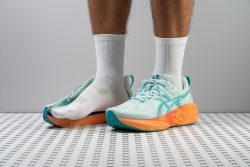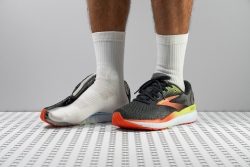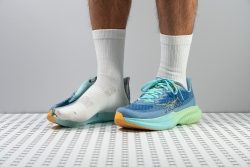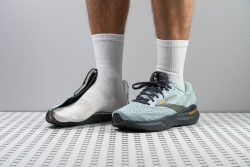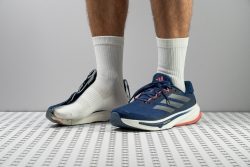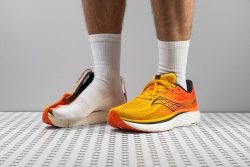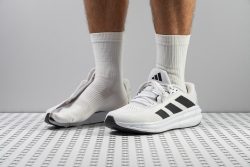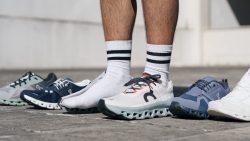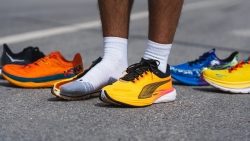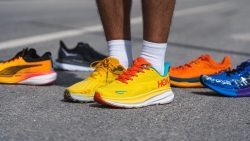7 Best Running Shoes For Beginners in 2025
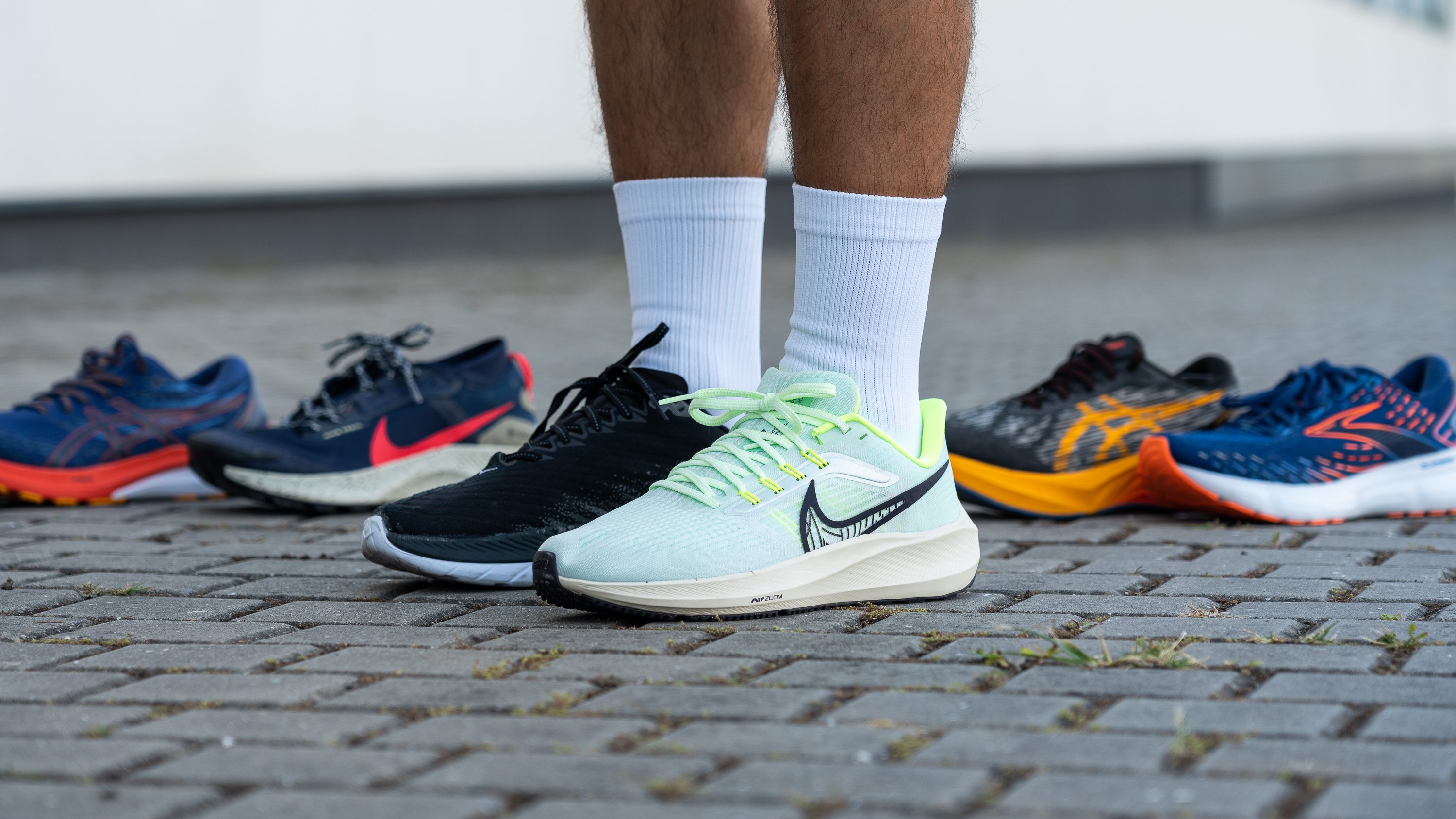
We buy shoes ourselves. We earn commissions when you buy through us, at no extra cost. Why trust us
They say great things come from small beginnings. That said, don't confuse "small beginnings" for a rough start. No, you can be in your best form as a freshman if you sport the finest running shoes for beginners.
We've tested remarkable entry-level running shoes. We identified all they key features of a great running shoe and we determined the pros and the cons of the shoes we ran in. We also tested all these shoes in our lab to double-check everything and quantify shoes' performances.
So, whether you fancy a budget-friendly pair or you're looking for something mighty formidable on the trail, we brewed this beginner-friendly selection for you.
How we test running shoes for beginners
Assembling such an impressive selection as this is not actually a walk in the park. We do follow a set of principles, after all. To give you a clearer idea, take a look at our approach:
- We purchase beginner-friendly running shoes with our own money. We avoid any form of financial assistance, and we do not accept free shoes from brands.
- We run in these shoes to check their comfort level, general performance (including traction), and durability.
- We run them through a series of tests in our lab to test their energy return, shock absorption, breathability, stiffness, outsole hardness, etc.
- We slice the shoes into pieces and review all the parts present. This also allows us to accurately measure the shoes' stack heights and midsole softness.
Best running shoes for beginners overall
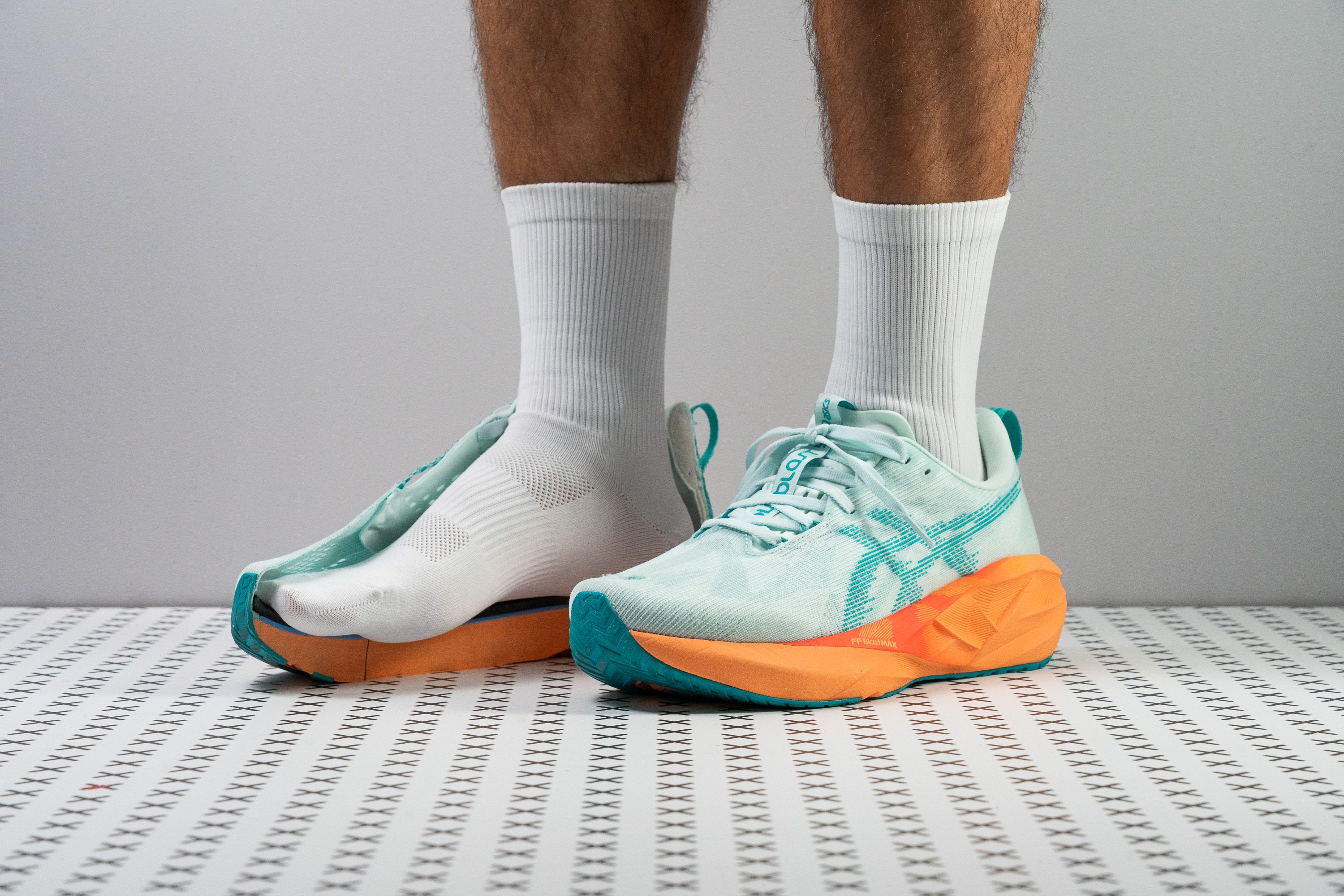























































What makes it the best?
The Novablast 5 has the three key components a new runner needs—comfort, steady support, and enough energy return to enjoy the sport. Look no further because we’ve tested in the lab and discovered in our runs that these ASICS are the best running shoes for beginners.
This daily trainer is such a delight to run in. It's made with an above-average 40.9/33.5 mm stack and a heavenly foam that provides all-around comfort and bounce to an athlete building mileage. We tested its foam, and our durometer shows it’s 38.4% softer than average.
Even with its maximum cushion, the shoes don’t feel wobbly. It keeps our feet in place even on fast turns. Our torsional rigidity test confirms this support with an above-average 4/5 rating. Our feet felt firmly planted to the ground with its midsole that’s 8.3/6.9 mm wider than average in the forefoot and heel, respectively. All these enhance a more stable and supported ride.
Based on our 30° bend test, Novablast 5 is 25.3% more flexible than average, a crucial element for comfort to make the shoe manoeuvrable and the ride more enjoyable for beginners.
However, the outsole doesn’t inspire confidence in wet conditions. Newbies who often encounter wet surfaces or rain should find a grippier shoe.
Pros
- Improved energy return with FF Blast MAX foam
- Plushiest foam in a Novablast yet
- Keeps the same price as v4
- Higher stack height for extra cushioning
- Enhanced flexibility
- Lighter than its predecessor
- Best Novablast ever for wide feet
- Exceptional weight-to-cushion balance
- Works for short, medium and long runs
Cons
- Breathability could be improved
- Toebox durability
- Toebox durability
Best daily training running shoes for beginners
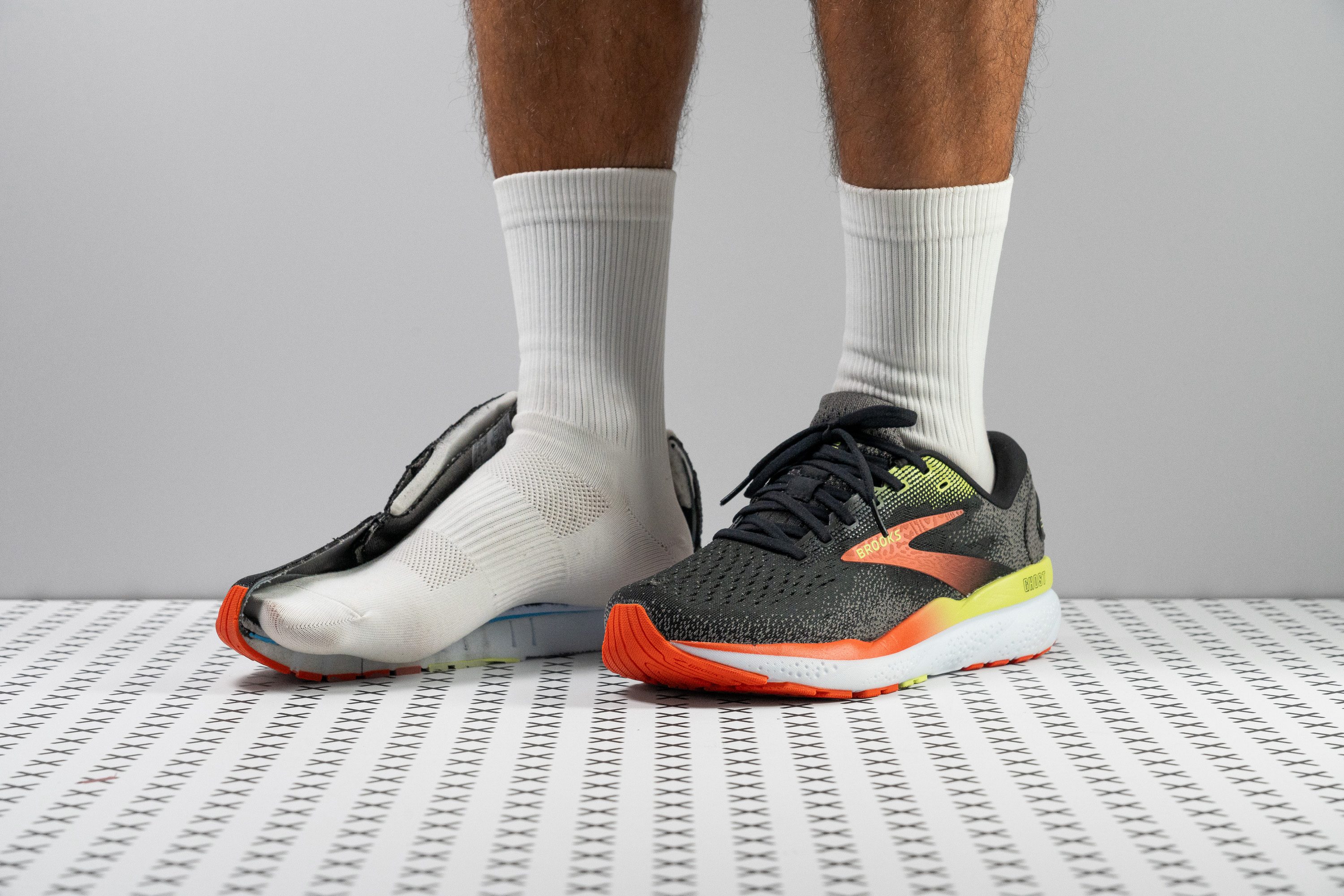























































What makes it the best?
Verified by our lab, the Brooks Ghost 16 is our top daily trainer recommendation for beginners because of its cushioned platform, uncomplicated midsole, and resilient outsole. We genuinely enjoyed our test runs as this fuss-free pair is ideal for soaking up daily mileage and activities beyond running.
Tailored for comfort and ease, it boasts a 35.1 mm heel stack for gentle landings. Our durometer confirms the DNA Loft v3 is a balanced 21.6 HA, offering some bounce into our strides. With its modest forefoot, the heel-to-toe drop is a double-digit 12.4 mm. Being 3.7 mm steeper than average, it’s more suitable for beginners who tend to heel strike and runners with Achilles or calf troubles.
Its midsole glides with our every stride, following without restrictions. Our flex test validates its versatility, standing 53.3% more adaptive than average. This produces a more natural running feel, which beginners will appreciate while getting used to the feeling of pounding the pavement.
The outsole is made to last many miles. It only received a 0.7 mm dent in our Dremel test vs. the 0.9 mm average, meaning it can resist wear and tear longer.
We warn caution that its lack of cushion in the forefoot may feel harsh for runners who naturally strike in the mid-to-forefoot areas. Ghost 16 is best suited for rear strikers.
Pros
- Fiables
- Ideales para los talonadores
- Suela exterior hecha para durar
- Muy estables
- Más reactivas
- Versátiles para varias actividades
- Mantienen un precio asequible
- Mantienen un precio asequible
Cons
- Lengüeta sin refuerzo
- Contrafuerte del talón rígido
- Parte delantera con poco volumen vertical
- Siguen necesitando un mejor retorno de energía
Best tempo shoes for beginners
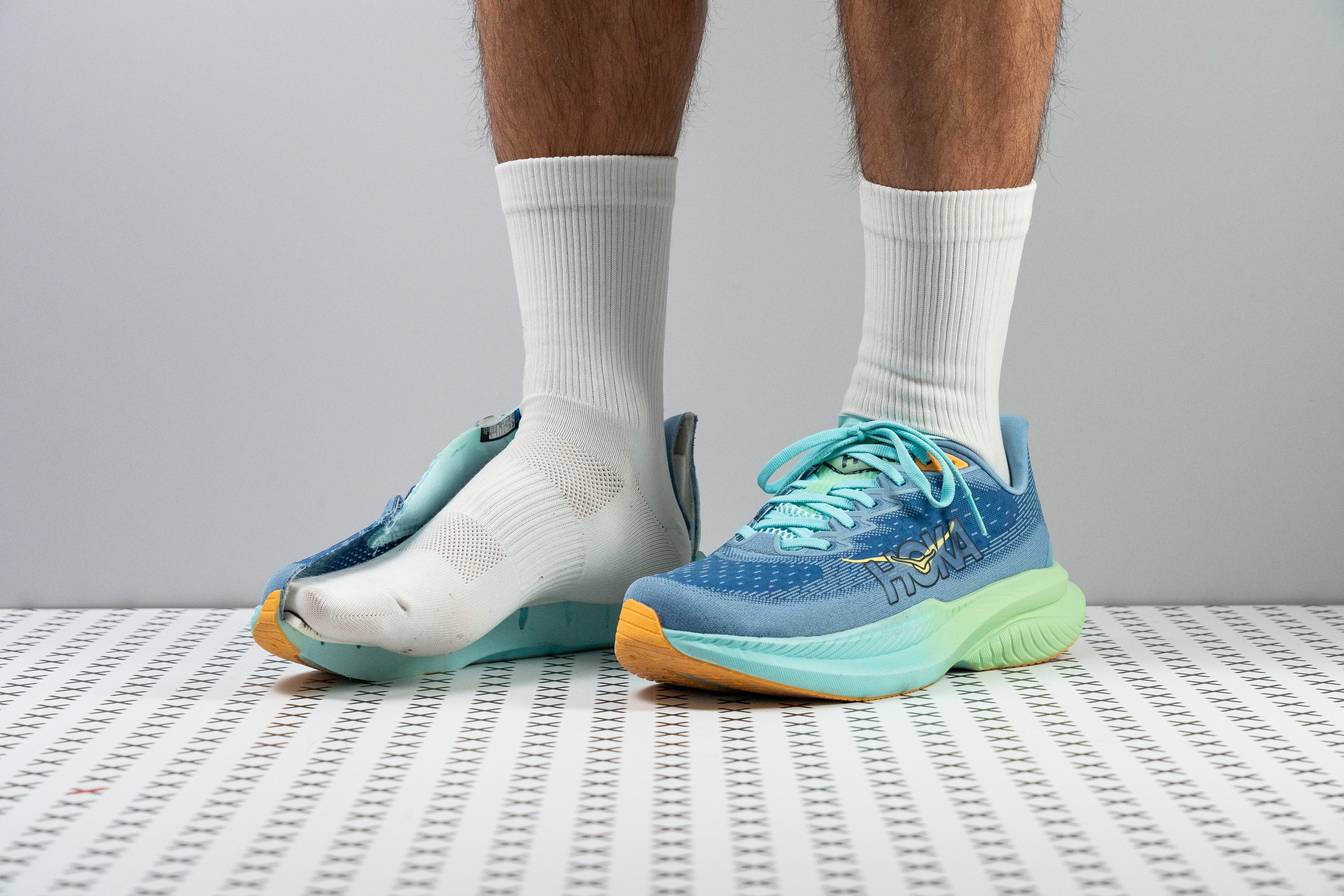























































What makes it the best?
The Hoka Mach 6 feels so much kinder to our feet, even though we were running faster than our perceived effort. It’s highly energetic without feeling harsh on our legs, and our lab tests reveal why: unlike carbon-plated shoes, it offers room for flexibility. Plus, it's well-cushioned in a lightweight package, making it our top tempo shoe for beginners.
We tested the midsole’s electric feel immediately, and our energy return test results back up the responsiveness we felt. With 65.4% in the heel and 67.0% in the forefoot, Mach 6 is much bouncier than average. Its rocker figure also keeps transitions smooth.
The Mach 6 has a thick buffer between our feet and the ground, with precise calliper measurements of 36.0/26.4 mm. Comfort is elevated to the next level with top-level shock absorption scores of 135 SA in the heel and 114 SA in the forefoot, both above average.
Surprisingly, its thickness doesn’t sacrifice weight and flexibility. Our scales show the shoe is remarkably lightweight at 8.2 oz (232g), 12.5% below average. Our agility is further enhanced with its bendable build, as it emerged 8.7% more flexible than average in our 30-degree test.
Unfortunately, its toebox has limited room and tapers more aggressively than average. Wide-footed runners should go for a more accommodating pair.
Pros
- Really lightweight
- Fantastic outsole
- Exciting ride
- Highly cushioned
- Great for heel strikers
- Handles faster paces
- Superb lockdown
- Excellent value at $140
Cons
- Drop varies from stated
- Tapered toebox
- Thin tongue
Best stability running shoes for beginners



















































What makes it the best?
Brooks Adrenaline GTS 24 excels as a running shoe that gives more support than the average daily trainer. In our runs, it offers comfort and low-key stability without altering our natural foot movements. Backed up by our lab numbers, it has a good mix of rigid and flexible elements that make it the best stability shoe for beginners.
Starting with the rigid side, this model features Brooks’ GuideRails technology to enhance stability. Extended along the sides, it raised the midsole sidewalls to secure our feet inside the shoe.
Balancing the stiffness is an adaptive midsole that promotes natural strides. Putting it against our flex test, it emerged 19.9% more flexible than the average.
Adrenaline GTS 24 provides a vast landing platform in the heel that inspires safe and sound landings. Our calliper shows it’s 4.3 mm wider than average.
What’s also balanced is its cushion, which feels both comfy and springy. Our durometer confirms it’s a slightly firm 25.1 HA. Meanwhile, comfort is enhanced with its mega 39.0 mm heel cushion.
However, the forefoot is only 25.5 mm which creates a steep 13.5 mm drop. Runners who prefer a more natural ride should check shoes with a lower offset.
Pros
- Stack height upgrade!
- Reliable support
- Breathable mesh with oversized vents
- Price remains unchanged
- Available in 4 width options
- Good durability
- Plush tongue for top comfort
- Ideal for heel strikers
- Foam upgrade to DNA Loft v3
Cons
- Firmer-than-expected midsole
- High drop may feel too steep
- Toebox height is a bit low
- Non-gusseted tongue
Best running shoes for beginners with wide feet
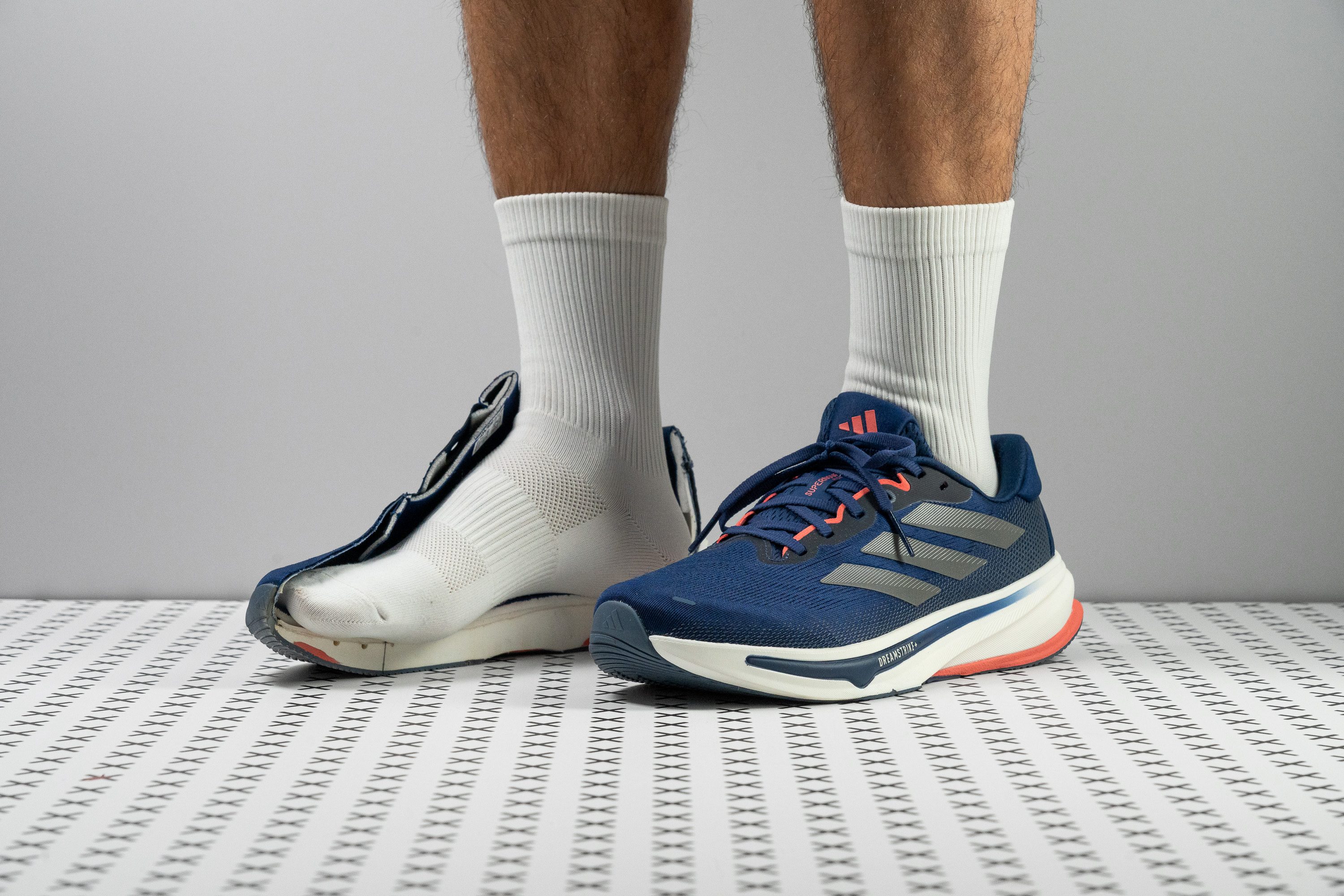

















































What makes it the best?
Through our wear tests, we believe beginner runners with wide feet will perfectly match with the Adidas Supernova Rise 2. Besides its spacious toebox design, we confirmed through lab tests, it also features support elements in its light and flexible build. Overall, our runs feel free and easy in this pair!
We poured our gel mould into the shoe to replicate the toebox. Using our calliper, the widest part emerged a generous 98.7 mm. Being 3.5% wider than average, those of us with broad feet didn’t experience any pressure points. Plus, its vertical clearance is a lot at 28.4 mm.
While the toebox is wide, the rest of the platform is slightly more streamlined, leading to its low weight of 9.1 oz (257g). Its unassuming build smoothens our transitions since the midsole moves easily with our feet. Our bend test confirms it’s 37.4% more adaptive than average.
While this is a neutral shoe, it has subtle stability elements like the Support Rods that are perfect for guiding beginners. The heel also has small side wraps that hold us in place to avoid any spillovers or ankle twists.
The shoe features a 9.5 mm drop, ideal for heel strikers—common among beginners. However, natural forefoot strikers may check for lower-drop options.
Pros
- Lighter than version 1
- Comfortable yet breathable upper
- Cold-proof PEBA midsole
- Stable ride with Support Rods
- Reflective accents for night visibility
- Maintains competitive price tag
- Responsive Dreamstrike+ foam
- Flexible, natural running experience
- Great for walking
Cons
- Outsole lacks Continental
- Not cushioned for forefoot strikers
- Still lacks a gusseted tongue
Running shoes for beginners with the best shock absorption
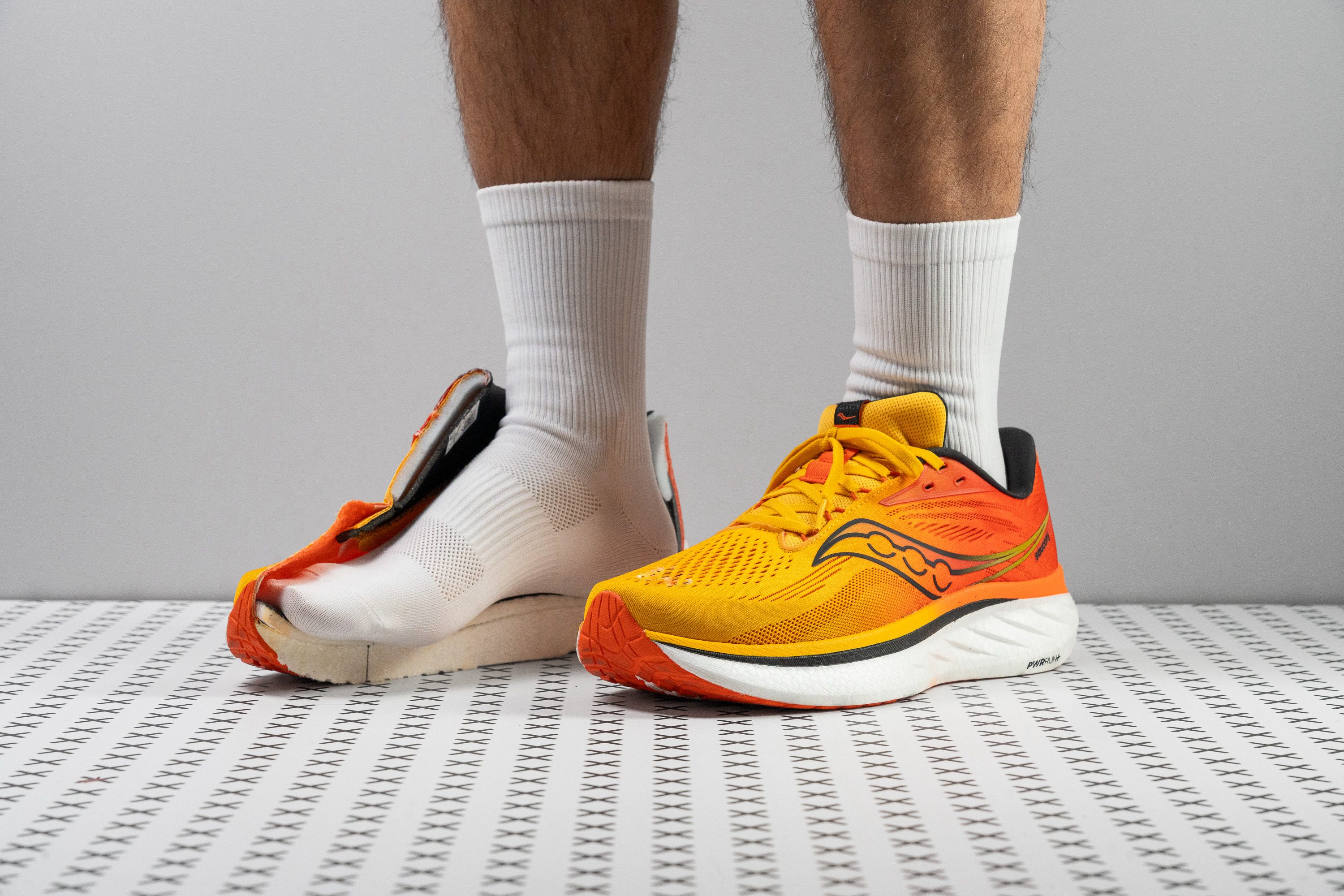















































What makes it the best?
The Saucony Ride 18 is a no-fuss trainer that allows us to gobble up the miles with comfort and agility. Further evaluations in the lab reveal that its impact-reducing cushioning effectively takes care of our muscles and joints, without adding bulk and stiffness to the midsole. Plus, its seamless ventilation enhances a soothing sensation from top to bottom. Among beginner running shoes, it delivers the best shock absorption.
Upon measuring the stack height, we recorded a balanced 35.0/26.6 mm. It makes up for cushioning by increasing its capacity to absorb shock, proven by high scores of 141 SA in the heel and 116 SA in the forefoot.
The Ride 18 never felt like a burden on foot, with its minimal 9.0 oz (255g) figure weighing below average. Its effortless and natural feel is further enhanced by its pliable midsole. Emerging 27.6% more bendable than average in our flex test, it’s comfortable for long hours of wear and versatile enough for walking and jogging.
Our feet found a cosy place in the Ride 18 as we were locked down snugly in a plush yet breathable space. The light upper allows air to flow freely, as our breathability tests confirm with a 5/5 score.
While the Ride 18 offers decent support for neutral runners, those with pronation issues or who need more stability should go for more structured trainers.
Pros
- Massive weight reduction
- Superb breathability
- Responsive ride
- Good option as an everyday shoe
- PWRRUN+ insole
- Great vertical room for toe movement
- Same price as v17
- Fantastic step-in feel
- No heel slippage at all
- Improved shock absorption
Cons
- Narrow for wide-footer runners
- Low outsole coverage
- Low outsole coverage
Best budget running shoes for beginners
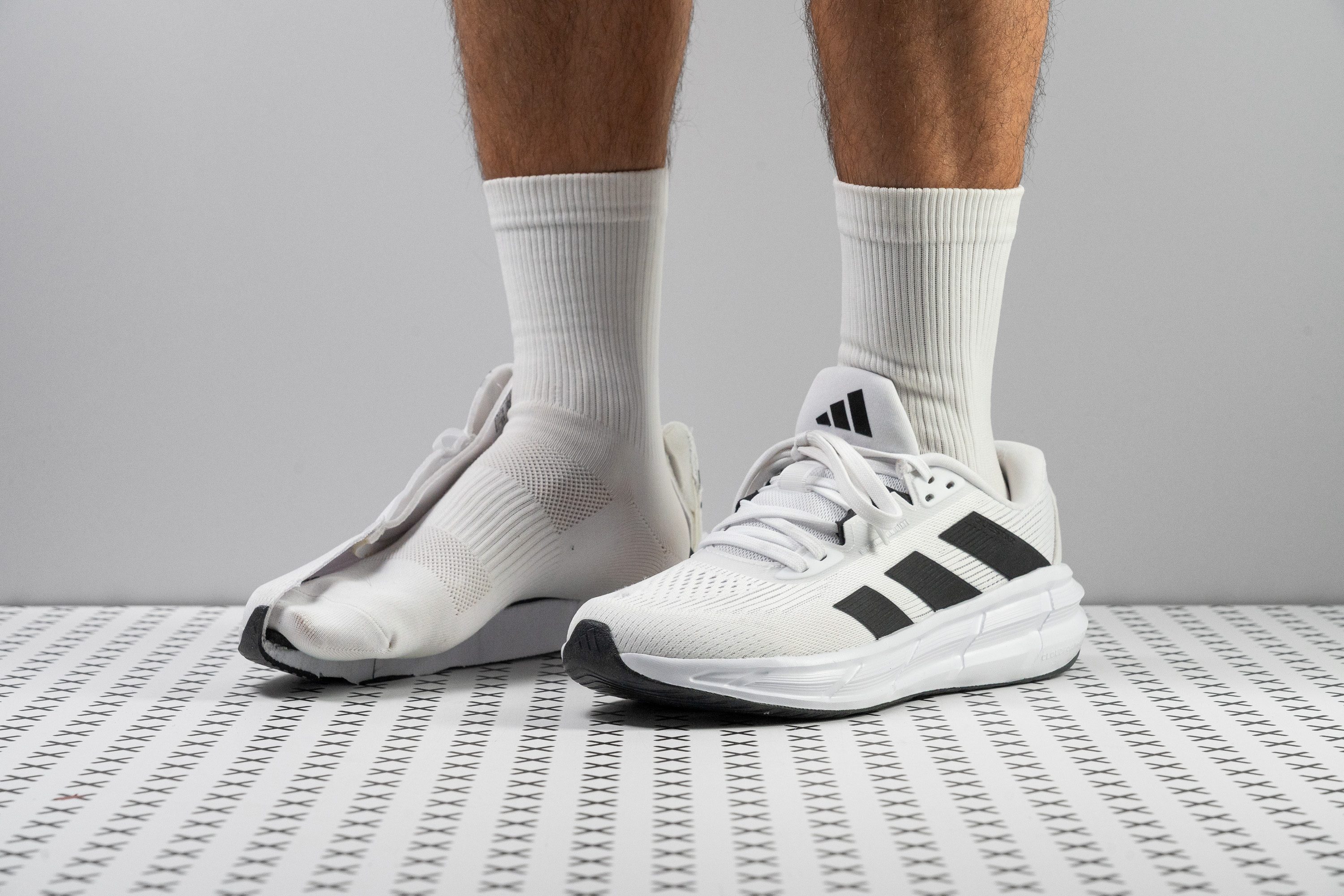












































What makes it the best?
Easy on the wallet and easy on the feet, we confirmed through our runs that the Adidas Questar 3 is tailor-made for beginners on a budget. With its high level of versatility and reliable stability, it ensures a fuss-free ride. Moreover, it exhibits remarkable durability in our lab despite its affordable £80 price.
Surprisingly, Questar 3’s comfort is comparable to its more expensive counterparts, which average £150. Its minimal resistance to bending gives a natural feel, with our flex test confirming it takes 5.3% less force than average to bend the shoe to 30 degrees. This adaptiveness makes it comfortable for daily activities and walks.
The Questar 3 offers solid heel stability, which most beginners or rear strikers would appreciate. We pinched the heel, and it showed little give, so we rated it with a 4/5 stiffness score. The heel also runs wide at 95.7 mm, which helps stabilise our footing, especially during landings.
Our durometer cements the outsole’s toughness with an 84.0 HC measurement, 6.1% firmer than average. To test its longevity further, we put it against our Dremel. With only a minimal 0.8 mm dent, it’s highly susceptible to wear, making it a high-value shoe. However, its below-average traction is best suited for dry roads. Those who run through wet surfaces should find a grippier shoe.
Pros
- Amazing value for money
- Excellent durability from heel to toe
- Breathable upper
- Stable ride
- Comfortable fit
- Great for casual wear too
- Ideal for heel strikers
Cons
- Rigid build
- Needs to lose some weight
- Subpar grip
- Subpar grip
5 features that determine running shoes for beginners
Here, we list 5 features that we use to filter beginners’ running shoes from the rest:
- Choose daily trainers! Tempo and race shoes can be bought later and they are not beginner-friendly because they are made for fast paces.
- Find cushioned running shoes with at least 30mm at the heel. Other running shoes that are closer to the ground might not offer enough impact protection for beginner runners.
- The heel-to-toe drop should be higher than 8 mm. This way, chosen running shoes are good for an average joe who grew up in conventional shoes (that are NOT flat).
- They should not have a carbon-fibre plate. These are saved for more advanced runners.
- They should be affordable! Our experience puts the limit at £140.
1 Why you should choose a daily trainer
Running shoes can be split into 3 very large groups:
- Daily trainers, best for easy runs, daily jogs, recovery runs, long slow distance, etc.
- Tempo shoes are used for tempo workouts or, so-called, speedwork. Tempo shoes often overlap with daily trainers or with competition shoes.
- Race shoes are usually saved for the race day, given their price and (non)durability. They are very fast, aggressive, can be quite unstable at slower paces, etc.
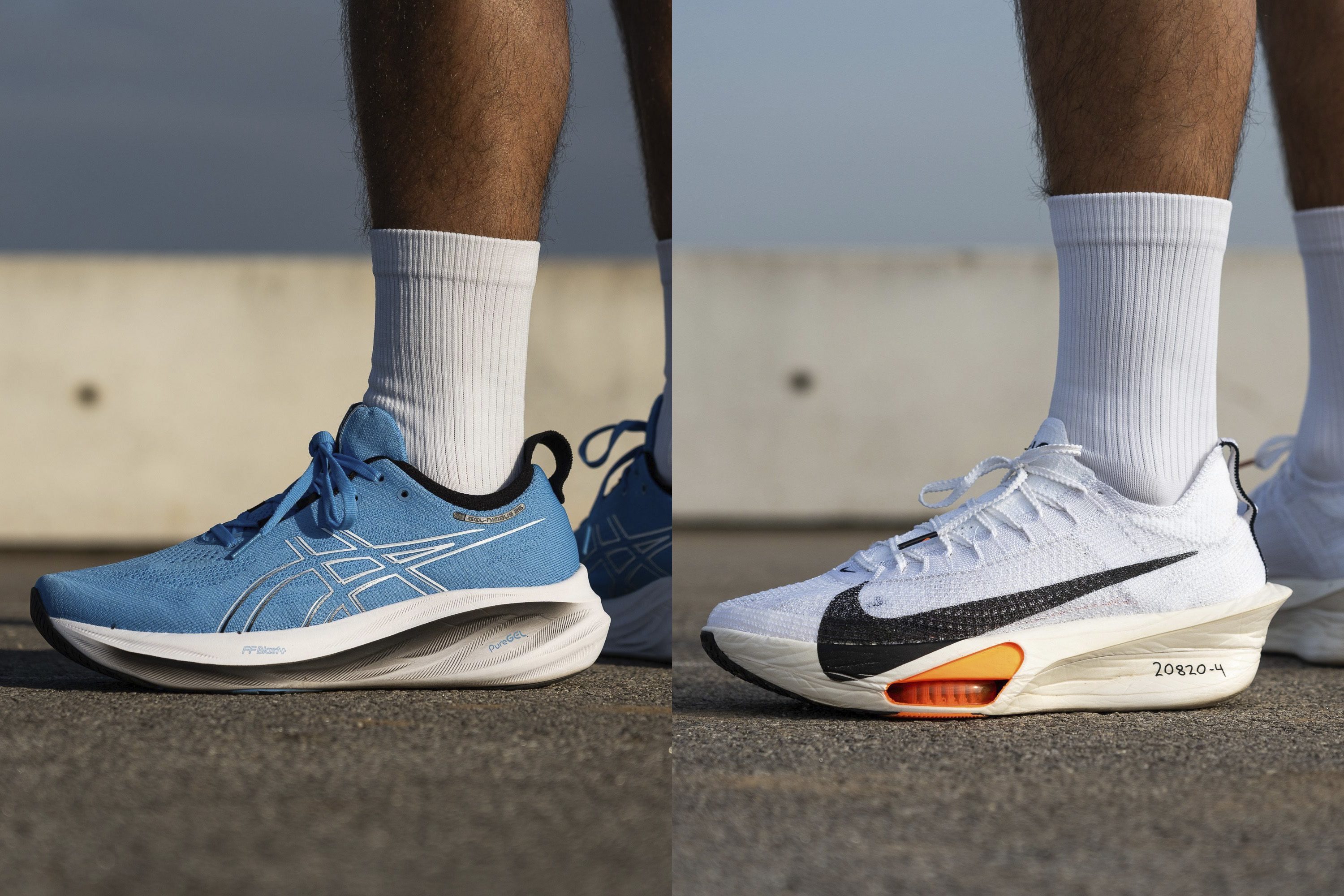
We recommend all beginner runners start with shoes for daily runs. We have numerous arguments to do so:
- These shoes best support slower and easier runs. If you’re coming from a different sport, which means you’re already fit and have some form, you might decide to pick up a pace a bit sooner than complete beginners. The good news is that many daily trainers can do that as well.
- Many race shoes are equipped with technologies that runners need time to adjust to. Some platforms are very unstable, especially at slower speeds. Other shoes work best for forefoot strikers only, and until you’re familiar with different strikers, it’s best to stick to daily trainers.
- Carbon-plates that are often found in premium race shoes are another thing beginner runners might need a lot of time to get used to, plus there are more things to take into account if deciding on the plated running shoes.
- Daily running shoes are, on average, cheaper than tempo and race shoes.
2 Cushioned and NOT minimalist
When talking about the midsoles, there are two large groups of running shoes: cushioned and minimalist (barefoot are also minimalist). Cushioned running shoes have a substantial amount of foam, while minimalist running shoes tend to be low to the ground. The amount of midsole, or how high off the ground our feet are, is measured in millimetres and called stack height.
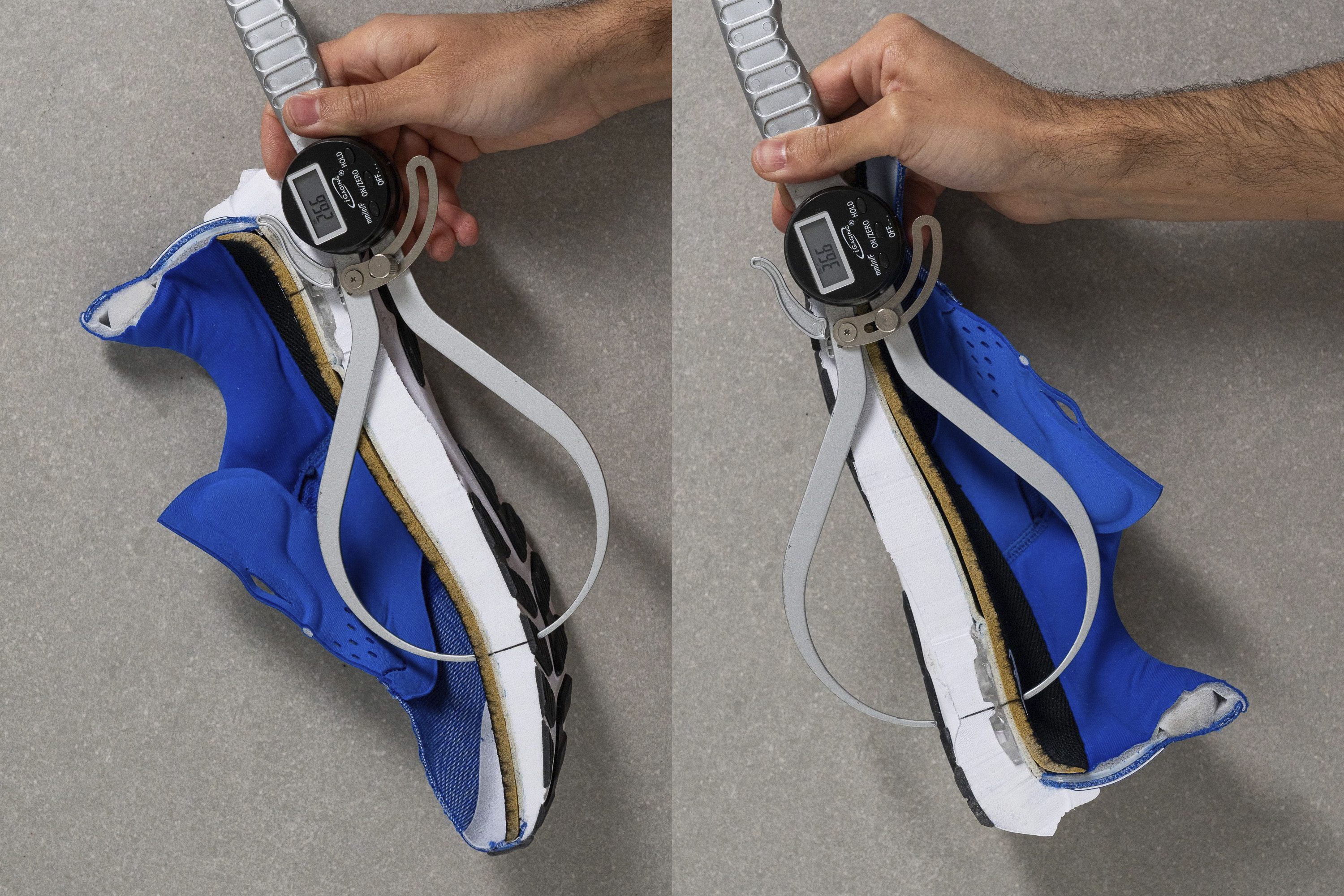
In our lab, running shoes are considered cushioned when they have at least 30mm at the heel. We also recommend this for beginner runners.
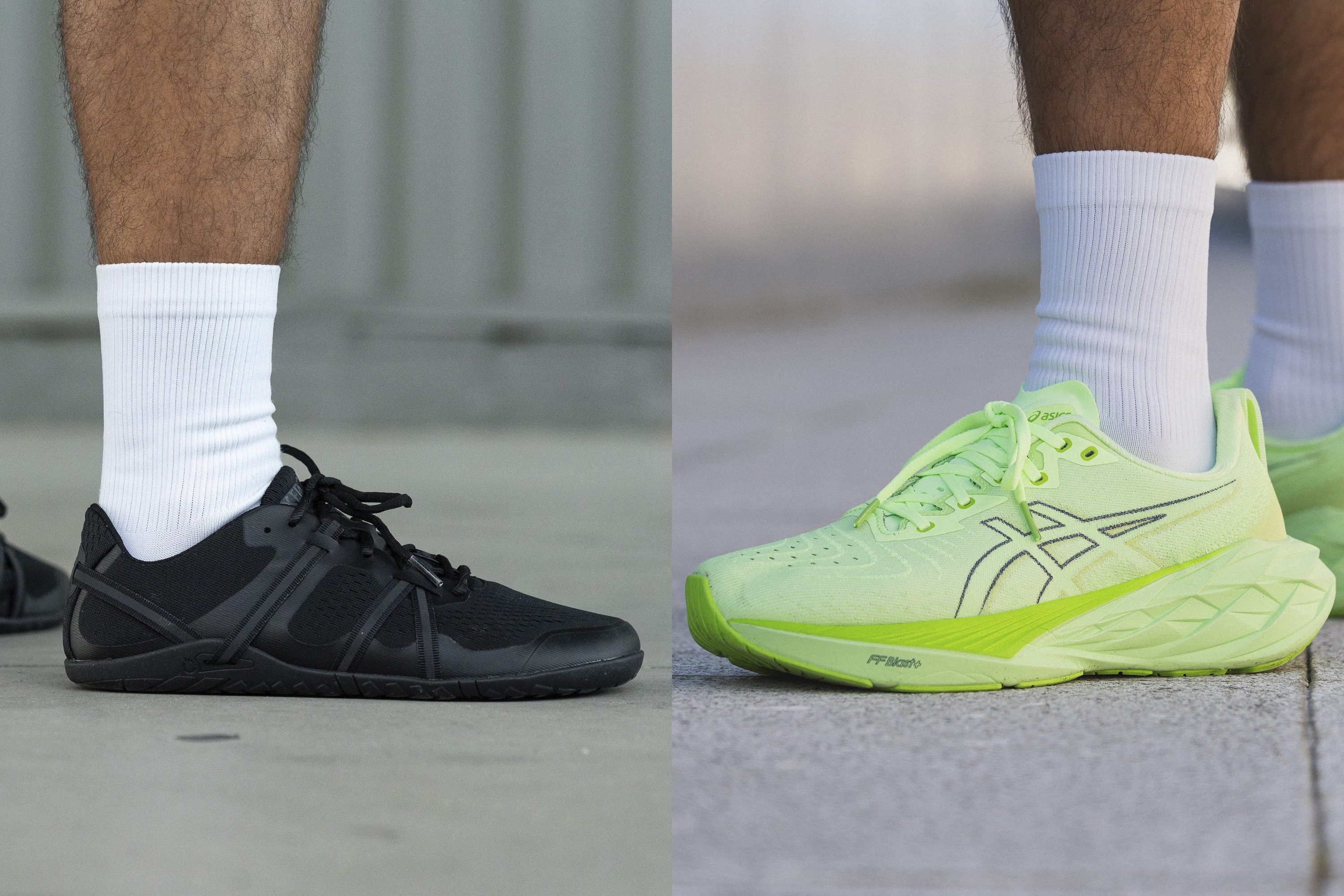
We recommend cushioned running shoes because they offer impact protection that is much needed for beginners. Midsoles leave enough room for the feet to sink in or squeeze the midsole at the landing and then push them back or forward. In minimalist shoes, there’s not enough midsole for this and runners’ feet have to do much more work.
Softness and shock absorption of running shoes for beginners
Cushioning is great but it can be firm, soft, or somewhere in between. To measure the softness of the foam, we use a shore A durometer. We stick its needle into the midsole and see a number on the display.
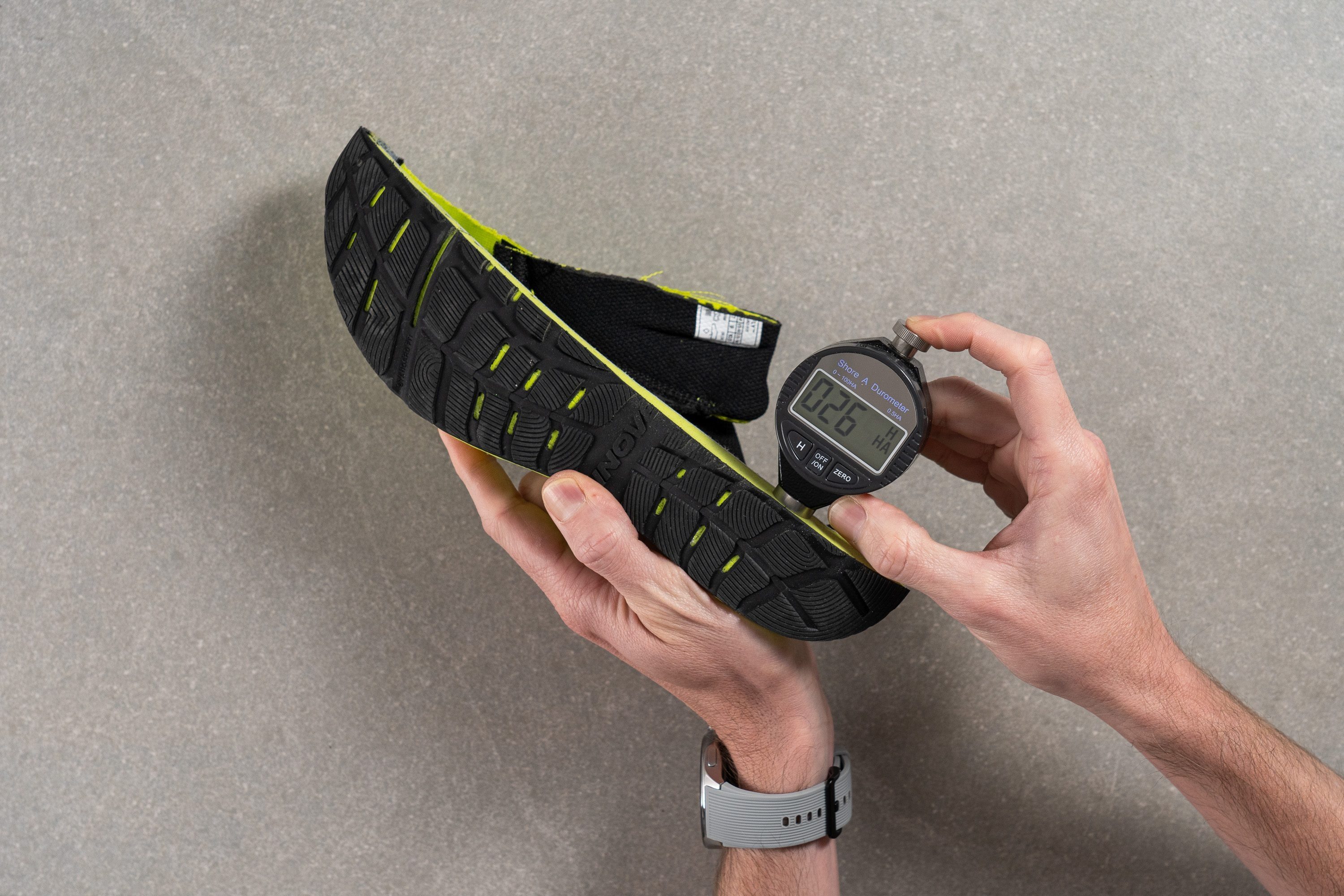
Seeing lower numbers on the durometer means we’re testing a softer shoe, while higher numbers indicate it’s a firmer midsole.
In case you give a few pairs a try and understand which level of softness works for you, you can easily find out their durometer readings or find shoes that are as firm or as soft. Very soft midsoles may allow your feet to sink in, but they do not offer enough in return. Firmer midsoles might result in discomfort. It’s best to try on a few pairs and see what works for you!
However, when it comes to how protective the midsole is, you should focus on shock absorption, not softness. Shock absorption or shock attenuation tells us how effective the midsole is at dampening the impact. The more it absorbes the forces at the landing, the less stress your legs have to handle at each landing.
Energy return of beginners' running shoes
While the talk about energy return is usually saved for race shoes, there's no reason to disregard it now. This is because energy return is such an important feature in running shoes, even in beginner ones. Even though the sky-high energy return is found in competition shoes, it does not mean that beginners should choose dull shoes that would make their legs work more!
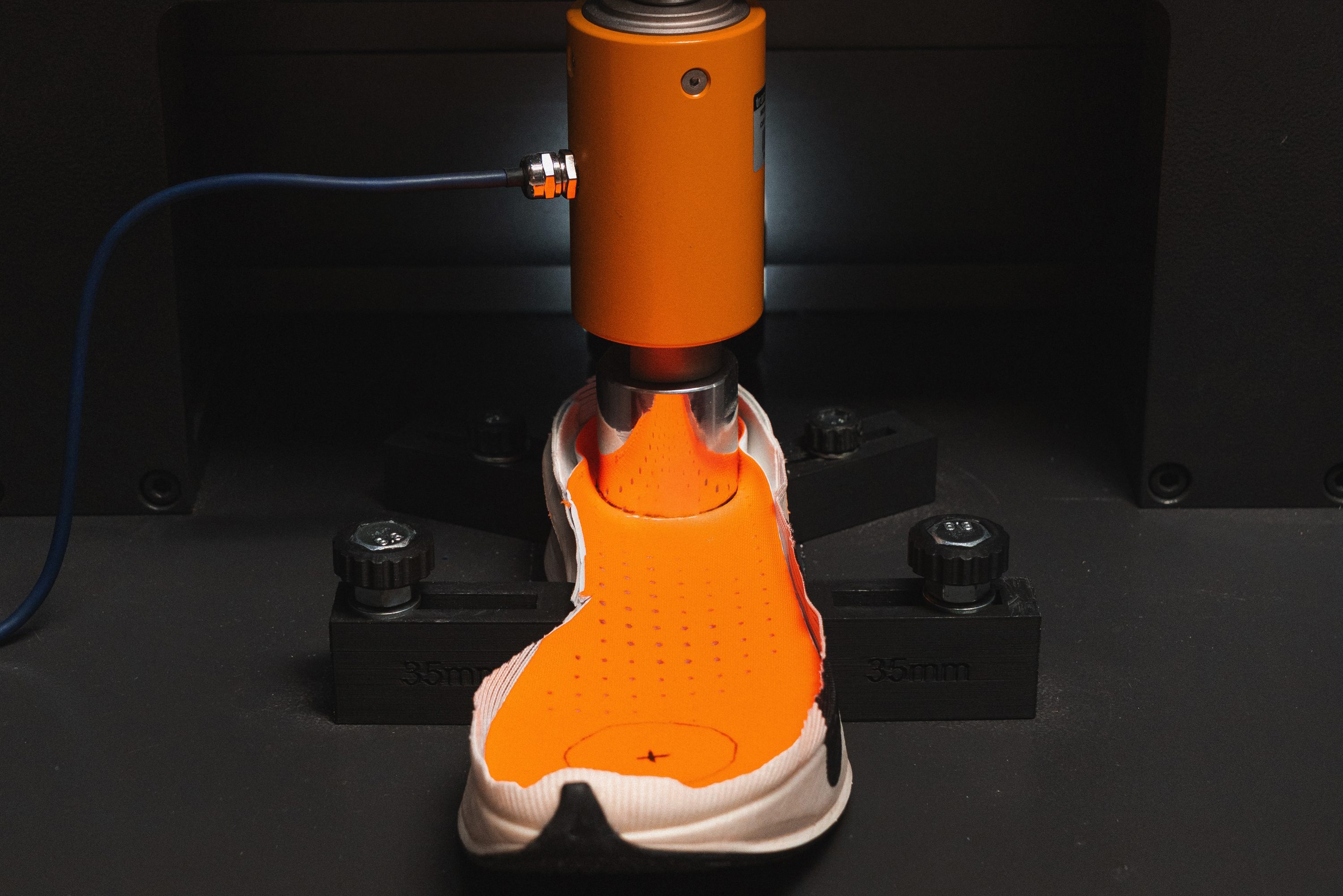
Energy return tells us how bouncy the shoe is. The higher the energy return, the better. However, very propulsive shoes are usually quite pricey and might take some getting used to.
3 Heel to toe drop: what it is and why you should look for high-drop shoes
Imagine flip-flops and imagine high heels. The biggest difference between them is the height of the heel. In flip flops, which are usually completely flat, it’s the heel is on the same level as the forefoot, and in high heels, the heel can lay quite high, up to 10cm. Maybe even higher.
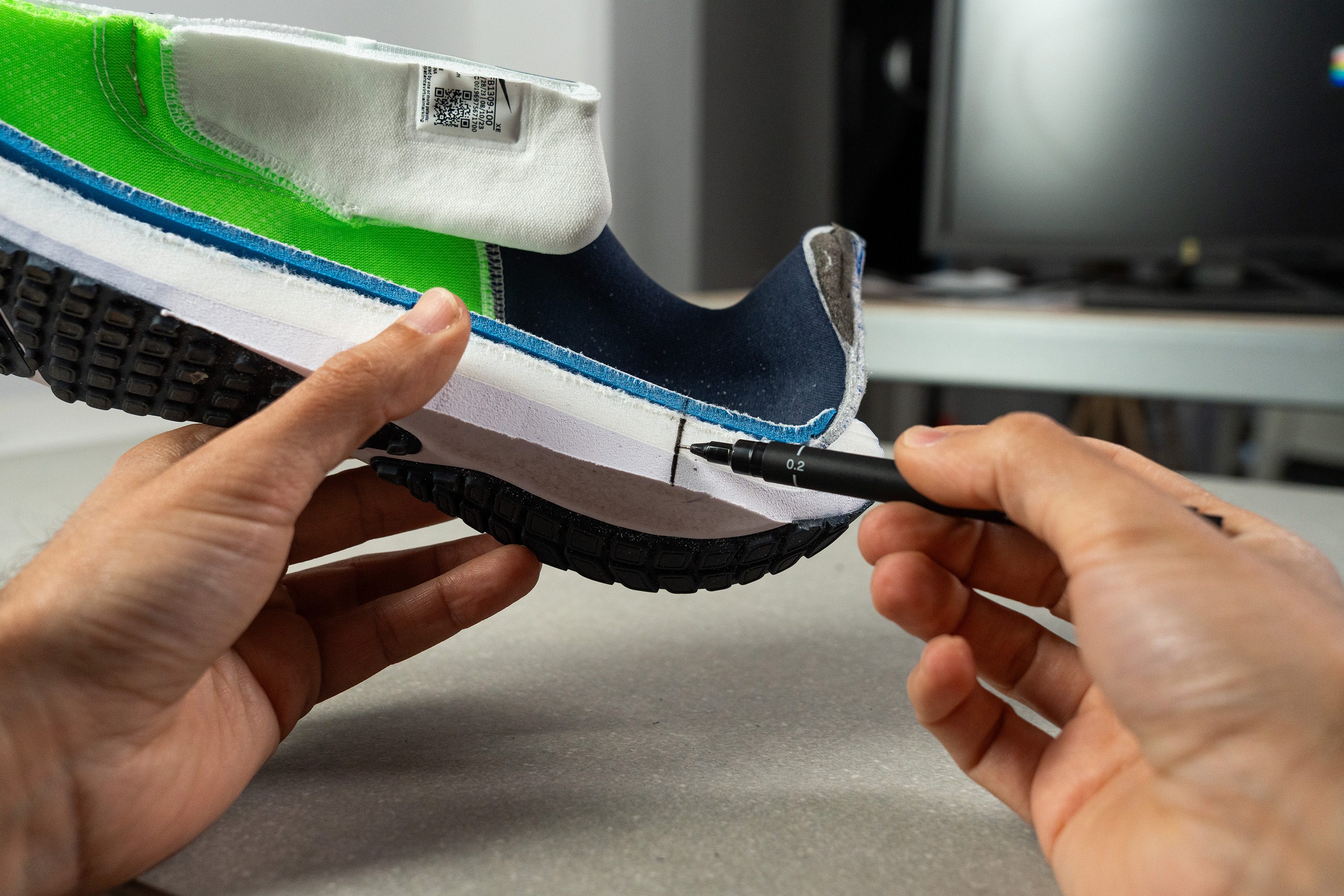
This difference in height between the heel and the forefoot is called heel to toe drop and is measured in millimetres. In the above-mentioned flip flops, we’d call it a zero drop because the heel and the forefoot lay on the same level. Then, as the heel level rises, we group them for easier understanding:
- Zero-drop running shoes: there’s no difference (0 mm) in height between the heel and the forefoot.
- Low-drop running shoes: the heel is usually 1-4mm higher than the forefoot.
- Mid drop running shoes: heel to toe drop is 5-8mm.
- High drop running shoes: heel sits more than 8mm higher than the forefoot.
Theoretically, negative heel drop does not exist. But, many researchers mention that it happens when heavier runners land on the heel in very soft midsoles. The maximal heel drop we’ve measured so far in our lab sits at 16.1 mm.
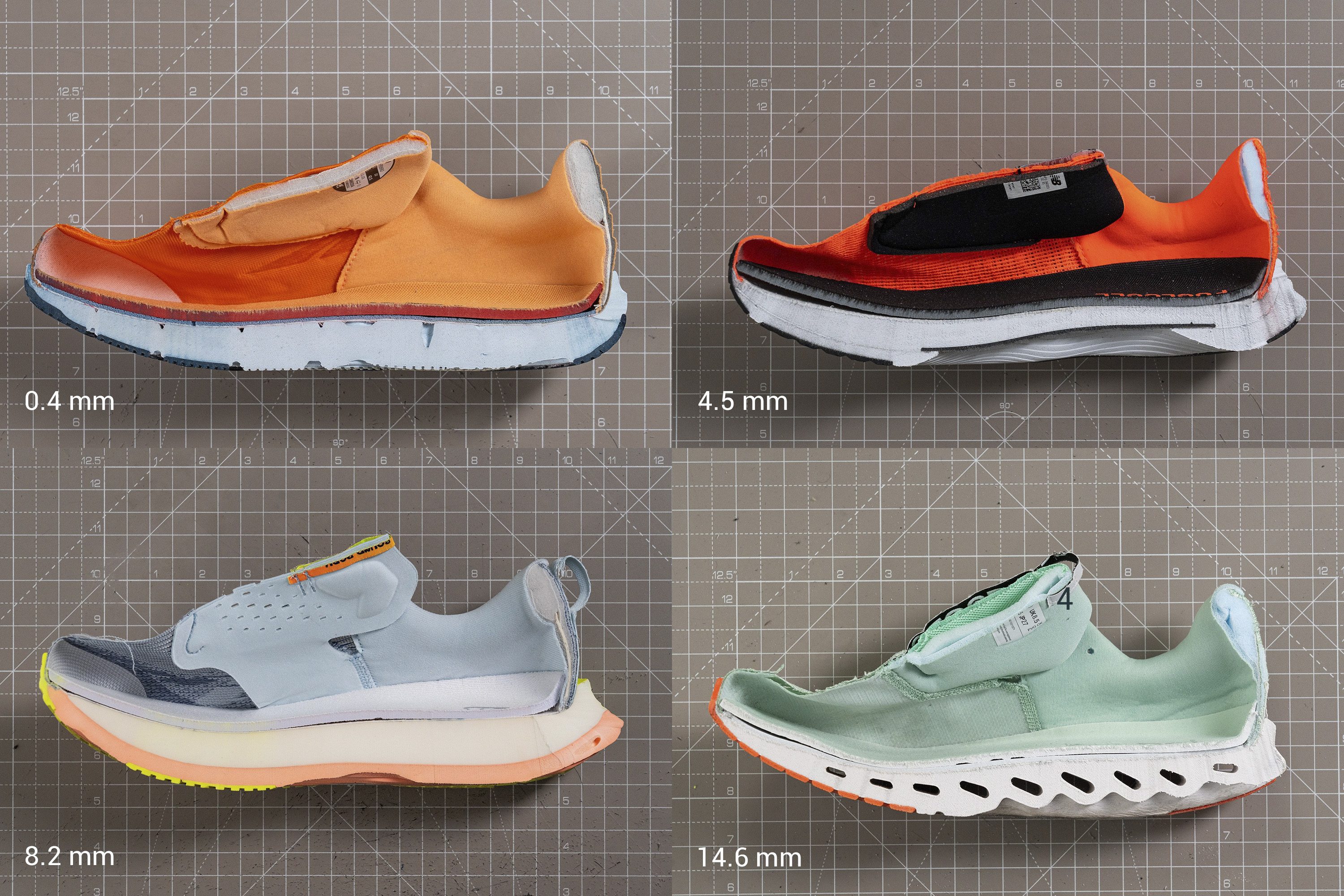
Now, why we’re talking so much about heel drop? Because it affects our muscles a lot. The lower the drop, the lower the muscles are utilised and vice versa. Zero-drop running shoes make our feet work the most. High-drop shoes, on the other hand, activate higher leg muscles, like hip muscles.
Previously, it’s been said that a non-written industry standard is 10mm. However, shoes have changed and the current average heel drop in road running shoes sits at 8.6 mm, with the majority of shoes having a heel drop in the 6.5-11.5 mm range.
For beginner runners, we recommend a heel drop of 8mm and above. This has shown to be a safer route, as zero drop and low drop shoes ask for a long adaptation period, given that the majority of the running population has grown up in conventional shoes, which have a higher drop.
Knowing the heel drop, especially the accurate one, is important because you should know which muscles will need to work the most. And, if you’ve been recovering from an injury, it’s best to choose a heel drop that will not aggravate it! Many runners have running shoe pairs of different heel drops in order to strengthen different leg and foot muscles, but this approach is not beginner-friendly.
|
If you want to learn more about heel to toe drop, we wholeheartedly recommend reading our in-depth guide: Heel to Toe Drop: The Ultimate Guide. |
4 Carbon plates are NOT good for beginners
Carbon-fibre plates can be embedded into the midsoles. They are used to make the shoes snappier. In many premium race shoes, they are said to make a big difference.
We don’t recommend carbon-plated running shoes to beginners because they are most often found in race shoes and:
- They work best at fast paces, although we are seeing them in daily trainers now as well (occasionally)
- They can be made for a specific strike only (especially forefoot strike)
- They are usually premium-priced. The average price of carbon-plated shoes is £220, while the average price of non-plated road shoes is £130.

|
If you’d like to learn more about running shoes with carbon-fibre plates, we’ve went down the rabbit whole in this guide: Carbon-Plated Shoes Cut In Half, Explained and Lab-Tested. |
5 How affordable can running shoes for beginners be?
Based on our extensive experience, we usually recommend shoes that cost £140 or less to beginners. The average price of beginner's running shoes (based on our parameters) is £110, while the cheapest pair retails at £60.
Keep in mind that, in all of these cases, we use MSRP (manufacturer’s suggested retail price), which means the price at which the shoe is sold once it is released. Not a discounted price. And discounts are present at all times!
Pronation and arch support
First, we can talk about arches. There are 3 large groups of runners: those with high arches, medium or “regular”, and low/fallen arches. Runners with low or fallen arches are said to have flat feet.
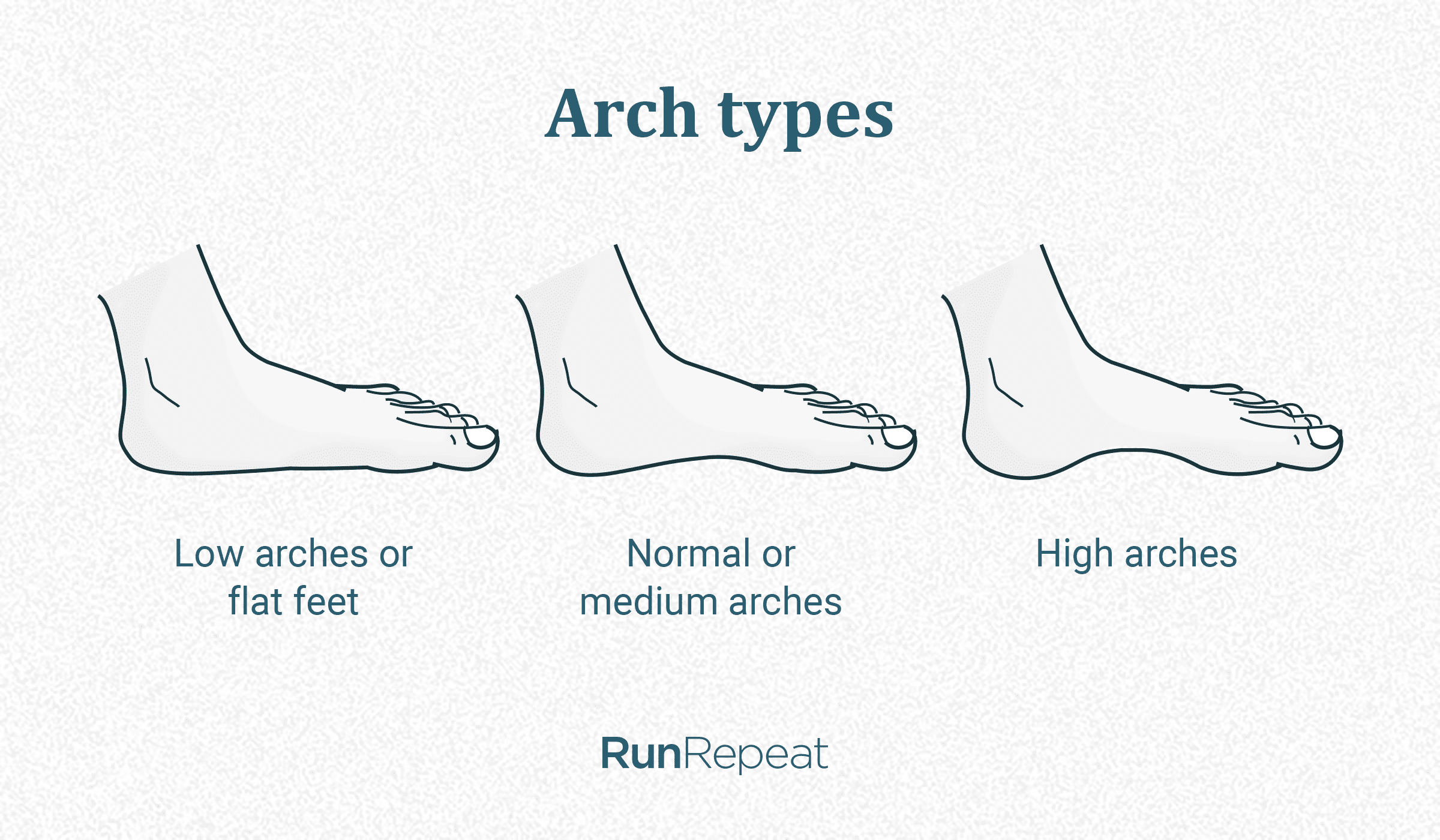
Then, we talk about pronation. Again, we have 3 groups of runners, those who overpronate, those who underpronate (or supinate), and those with neutral pronation. Pronation tells us how a runner lands and how much their ankle rolls inwards or outwards.
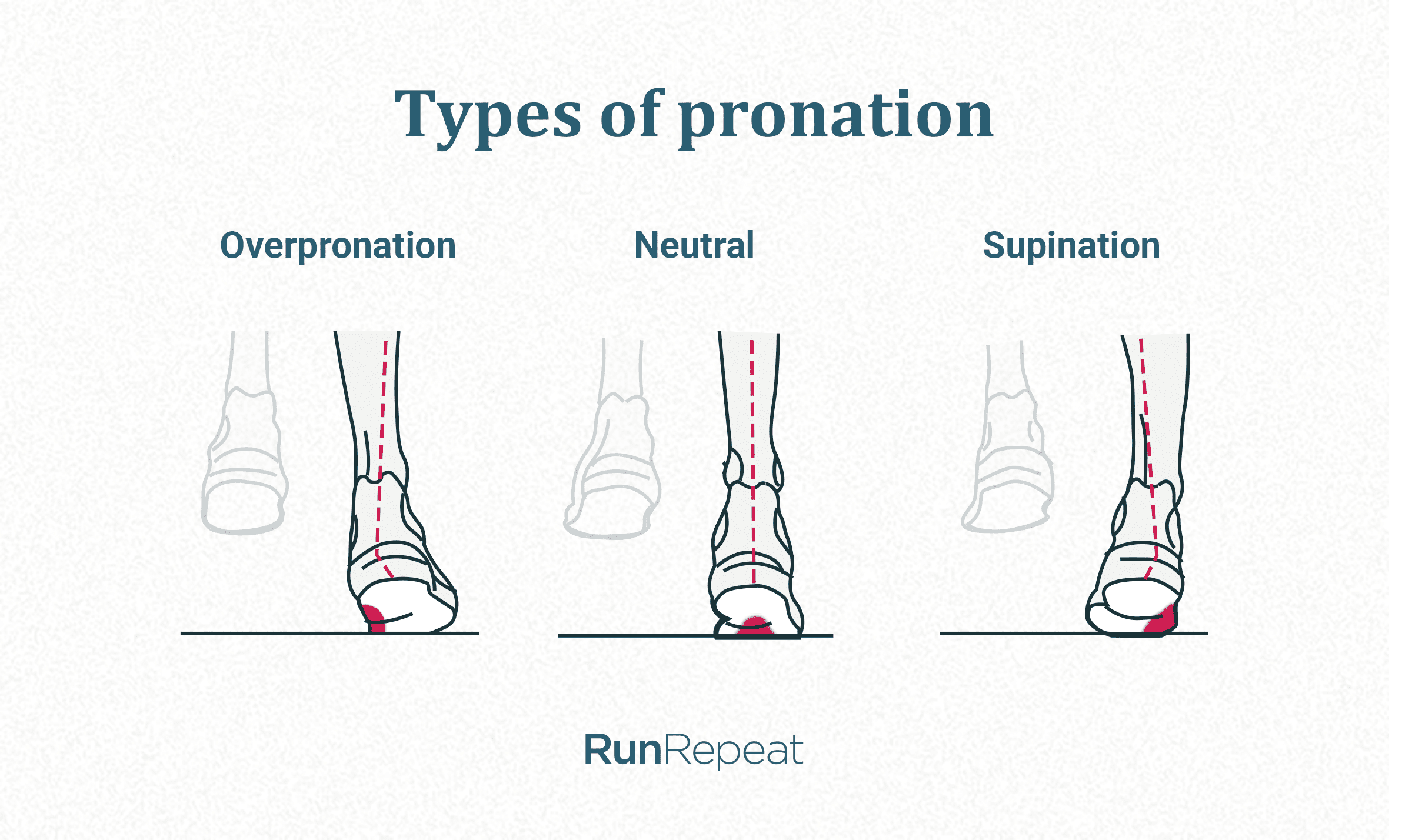
Overpronators will use the inner side of the shoes more, which is especially noticeable on the outsoles because they wear out on the inside more than on the outside. Supinators are the opposite and their shoes see the first signs of wear and tear on the outer side of the outsoles.
How do these 2 overlap? Well, runners with flat feet usually overpronate and need supportive running shoes called stability shoes. Runners with medium or high arches usually have neutral pronation, or they supinate, and they wear neutral running shoes (no stabilising features).

There are many different technologies used in stability running shoes. Their main purpose is to stabilise the heel so that the ankle rolls inwards less. From medial posts and dual density midsoles, to heel bevels and side walls, all of these technologies and approaches make the shoes more stable and supportive. We wrote about all of them in greater detail in the guide on best overpronation running shoes.
|
In case you want to learn more about arch support, we’ve got you covered: Arch Support for Runners: What, How and Why [In-Depth Guide]. |
Heel strike (where do you land): forefoot, midfoot, and heel strike
There is no one best foot strike. But, knowing your heel strike is important because it tells you which shoes will work best for you. If you land on the forefoot, you’ll want running shoes that are well cushioned in that area and you don’t need chunky heels, they might feel heavy and even bother you on the run.
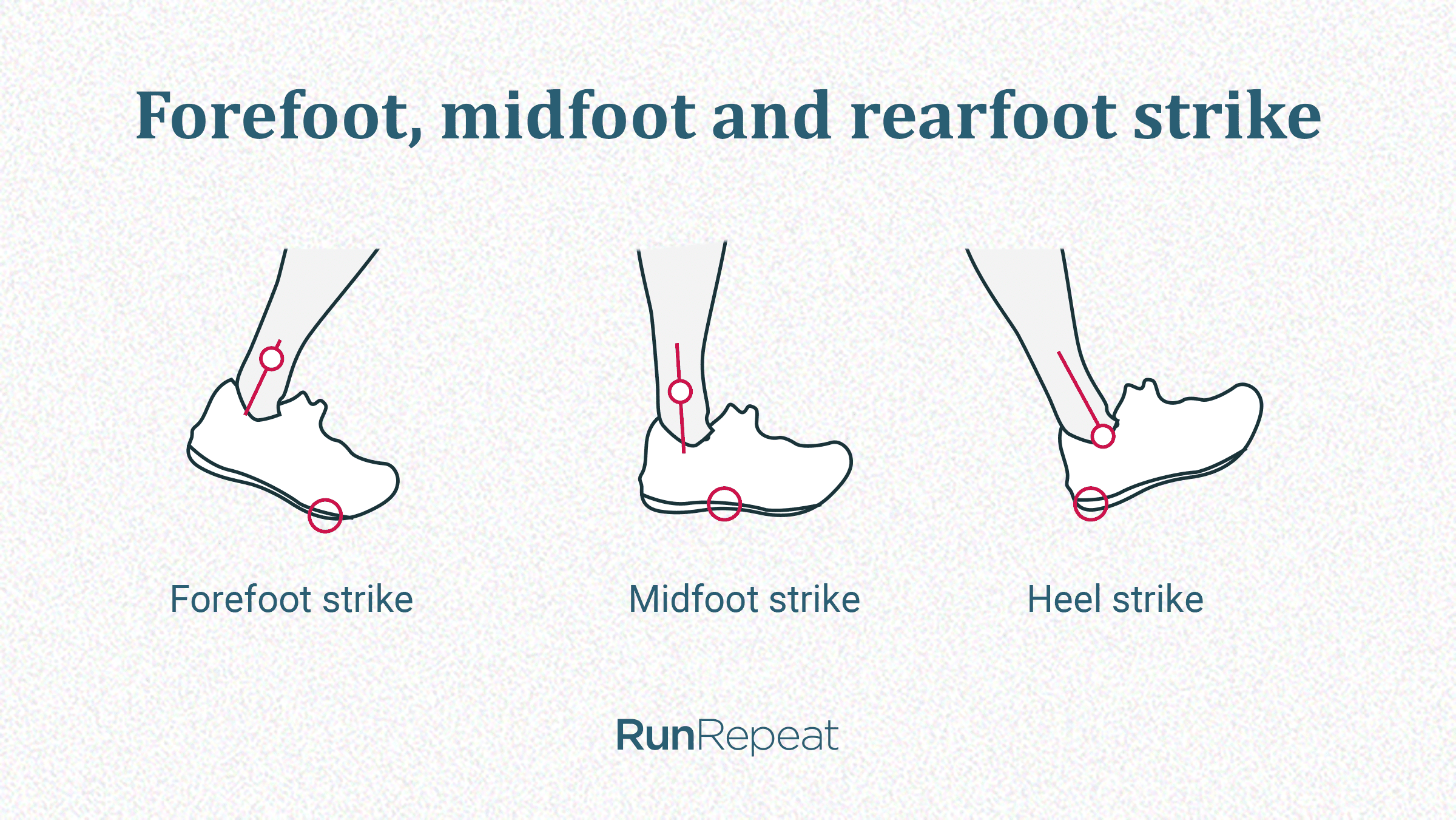
On the other hand, the majority of runners land on the heel, and need more cushioning in that area, maybe even some stabilisation (as mentioned in the chapter about arch support).
Some shoes work better for heel strikers, others work better for forefoot and midfoot strikers. And, the best thing: some shoes work for all foot strikes!
As you can see in the table above, beginner's shoes are rarely made for forefoot strikers only. This is because of our requirement for shoes to have a heel drop of at least 8 mm. Forefoot running shoes have a lower heel drop.
As a beginner, you can focus mostly on the outsole. If you’re a heel striker, don’t buy a shoe that has rubber only under the forefoot.
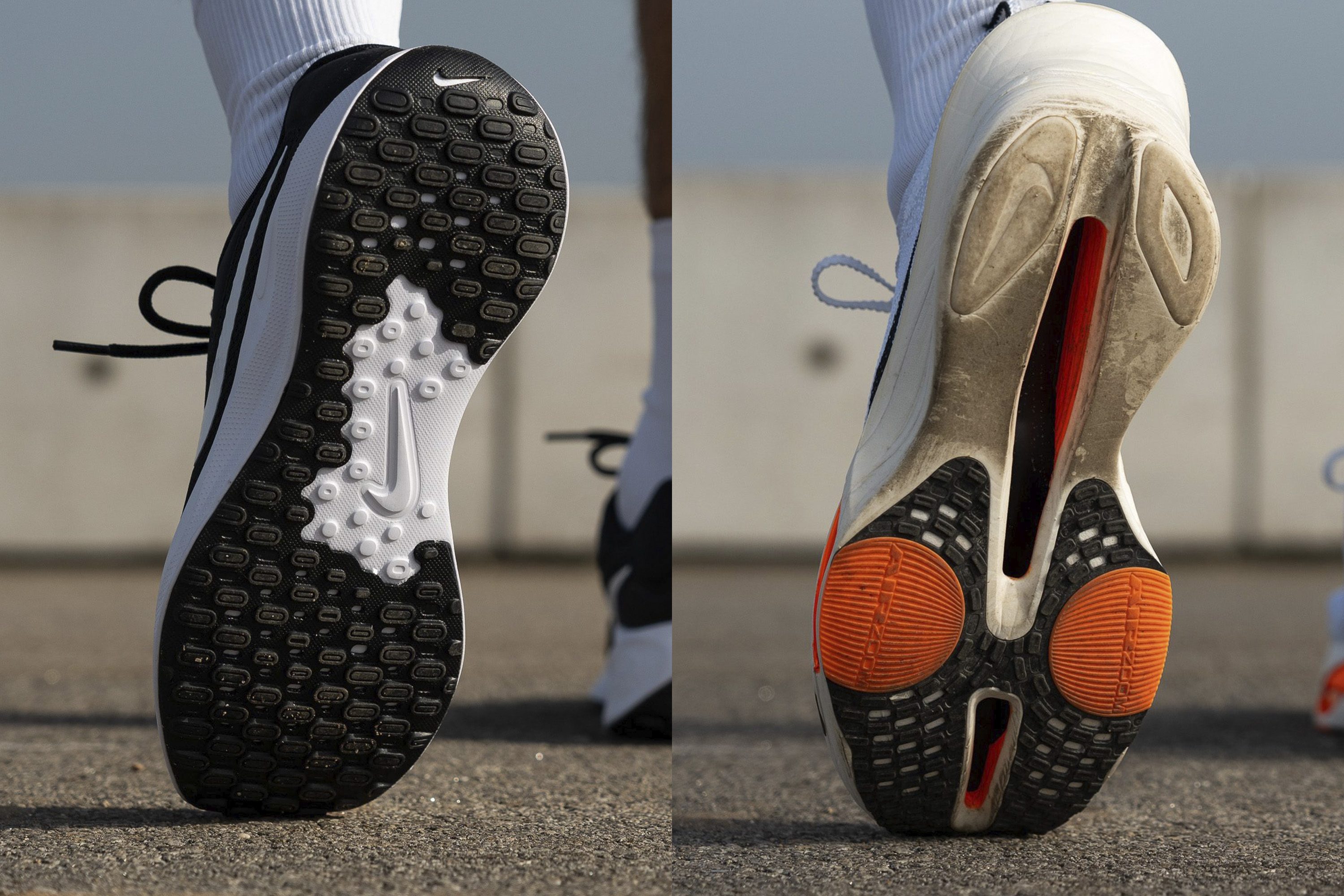
Fortunately, this is usually found in race shoes. If you do get such shoes and you’re a heel striker, expect sliding because the exposed midsole is not grippy and expect to end the life of your shoes prematurely as the exposed midsole is not durable at all!
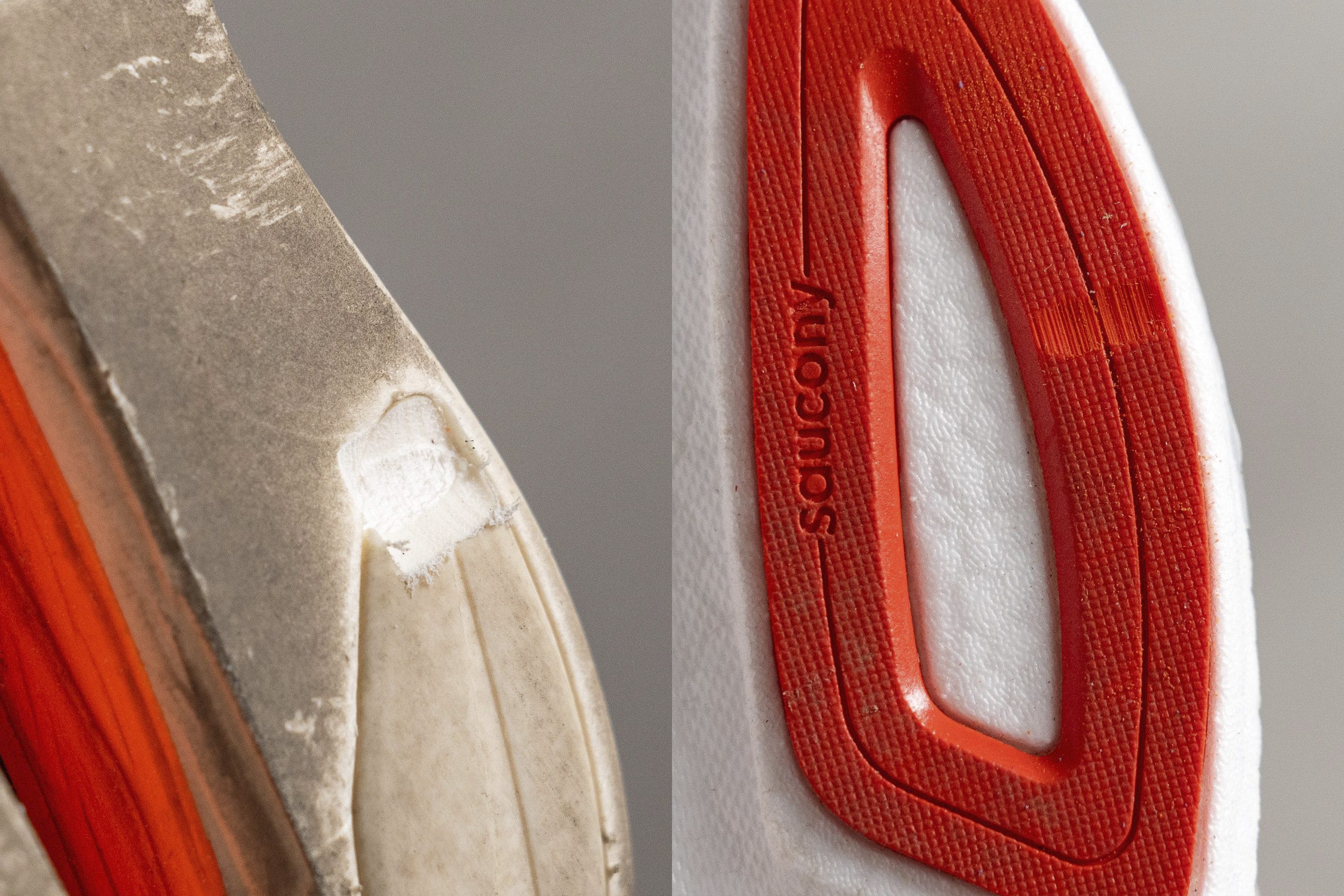
|
What are scientists saying about foot strike? How is it related to the heel drop? Should you change your foot strike? We answer these and many more questions in our guide: Foot Strike: The Ultimate Guide. |
Breathability of running shoes for beginners
This is not something you should overthink but do give it some thought if you:
- Have sweaty feet
- Plan to run in very hot or very cold weather
- Plan to run in wet weather.
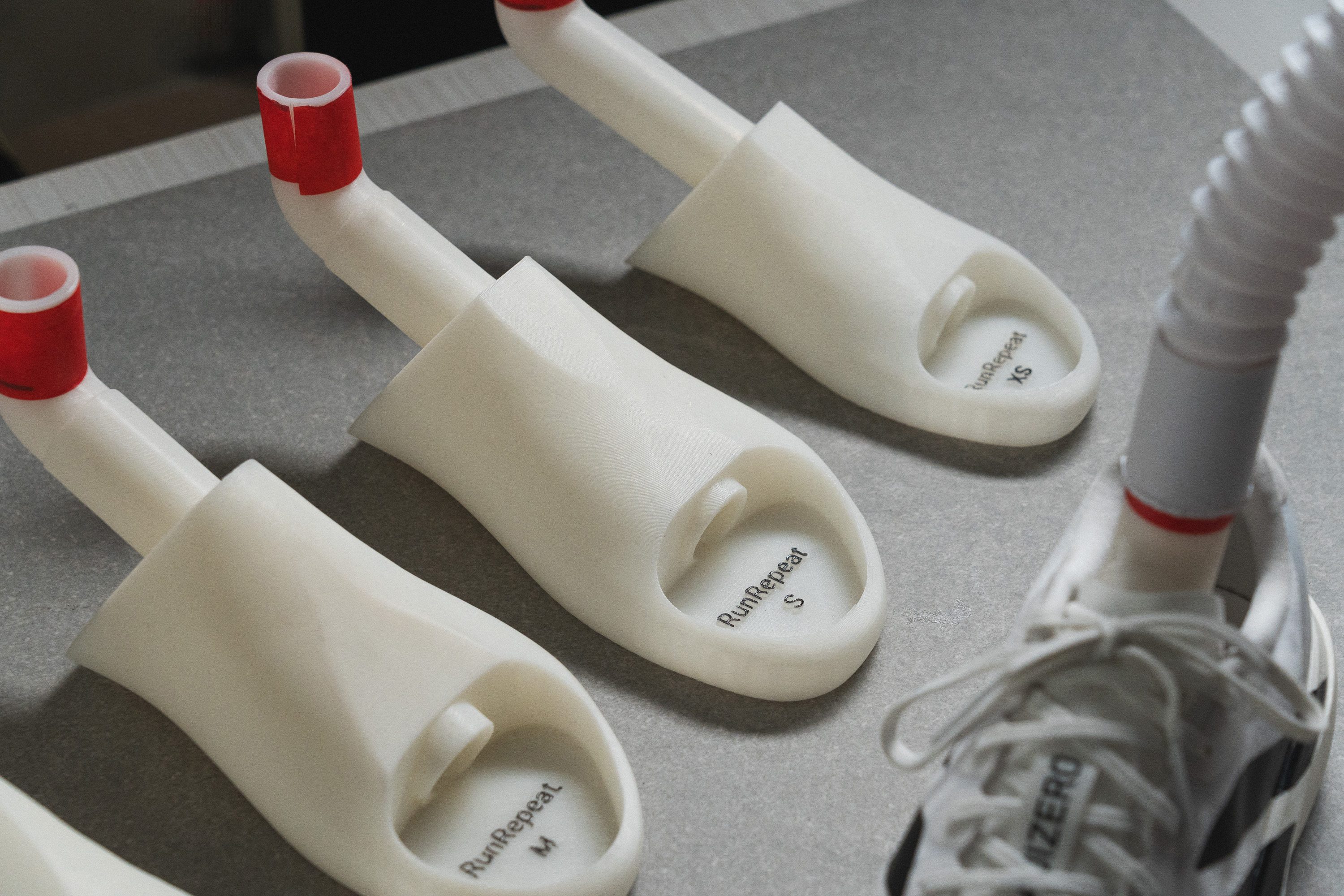
Very breezy running shoes are great for hot weather and sweaty feet, but in winter, you might be able to actually feel the air circulation in them and they are not warm enough. On the other hand, warm shoes are great for colder weather, but using them in warmer months might mean you will be running with soaked socks and potentially getting blisters.
In our lab, we assess the breathability of running shoes using a smoke machine and specially designed inserts that direct the smoke toward the toebox. We look at the amount of smoke that comes out and at which pace and, based on this, we assign a 1-5 breathability rating to each shoe. 1 is the least breathable, and 5 the most.
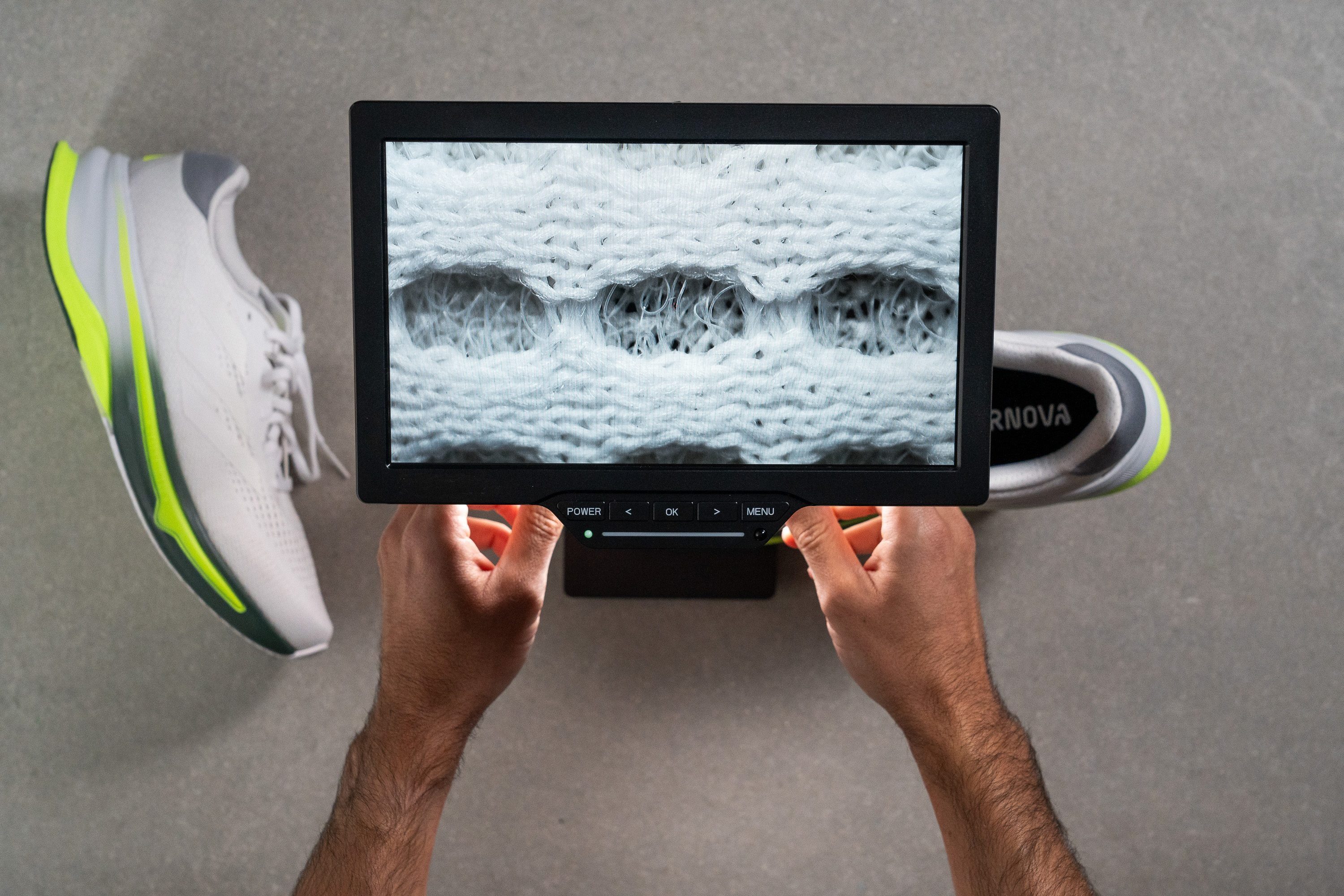
Then, we also look at the upper under the microscope. We do this to better understand the smoke test - why the smoke didn’t come through in some areas? What if it is a see-through upper but the smoke isn’t coming out? Microscope analysis gives us answers to these questions.

Waterproof running shoes for beginners
First, be sure you actually need these. Why?
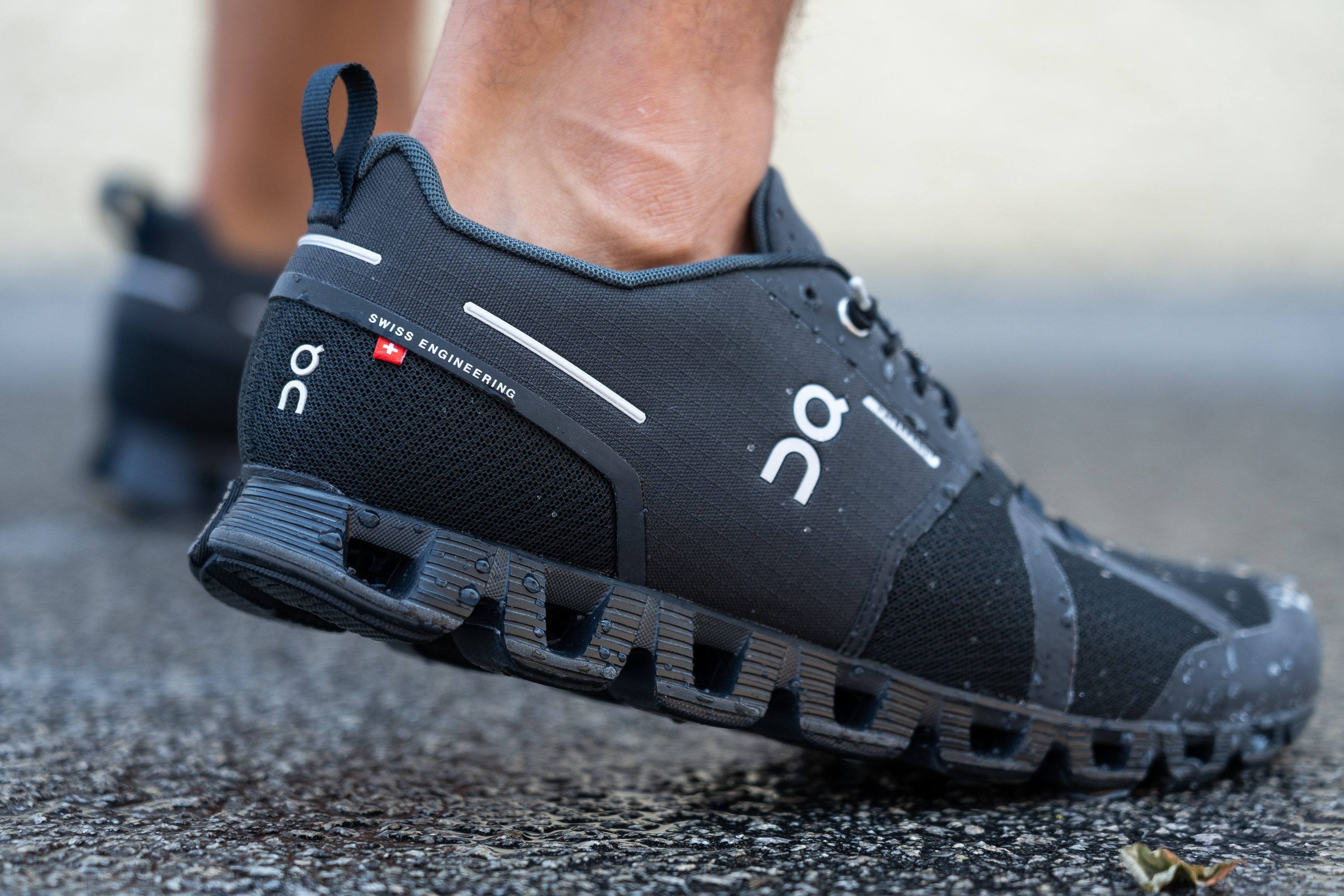
Because if you plan to run somewhere where you have only a few puddles or very light rain for short periods of time, you might do better with non-waterproof running shoes. Here’s why:
- Waterproof running shoes don’t breathe well. Your feet might be boiling only because you’re afraid of a few drops of water
- Because these shoes don’t breathe well, once the water gets in, it is not coming out! This might result in blisters, sliding within the shoe, etc. These shoes also get significantly heavier when wet because they don’t dry quickly.
- Waterproof running shoes are more expensive than non-waterproof ones.
It’s easy to recognise these shoes easily as brands do their best to promote the waterproof feature. The most common waterproof membrane is called GoreTex, so you can find GTX or GoreTex written on the shoes and as a part of the shoe name. Sometimes brands also write Waterproof or WP.
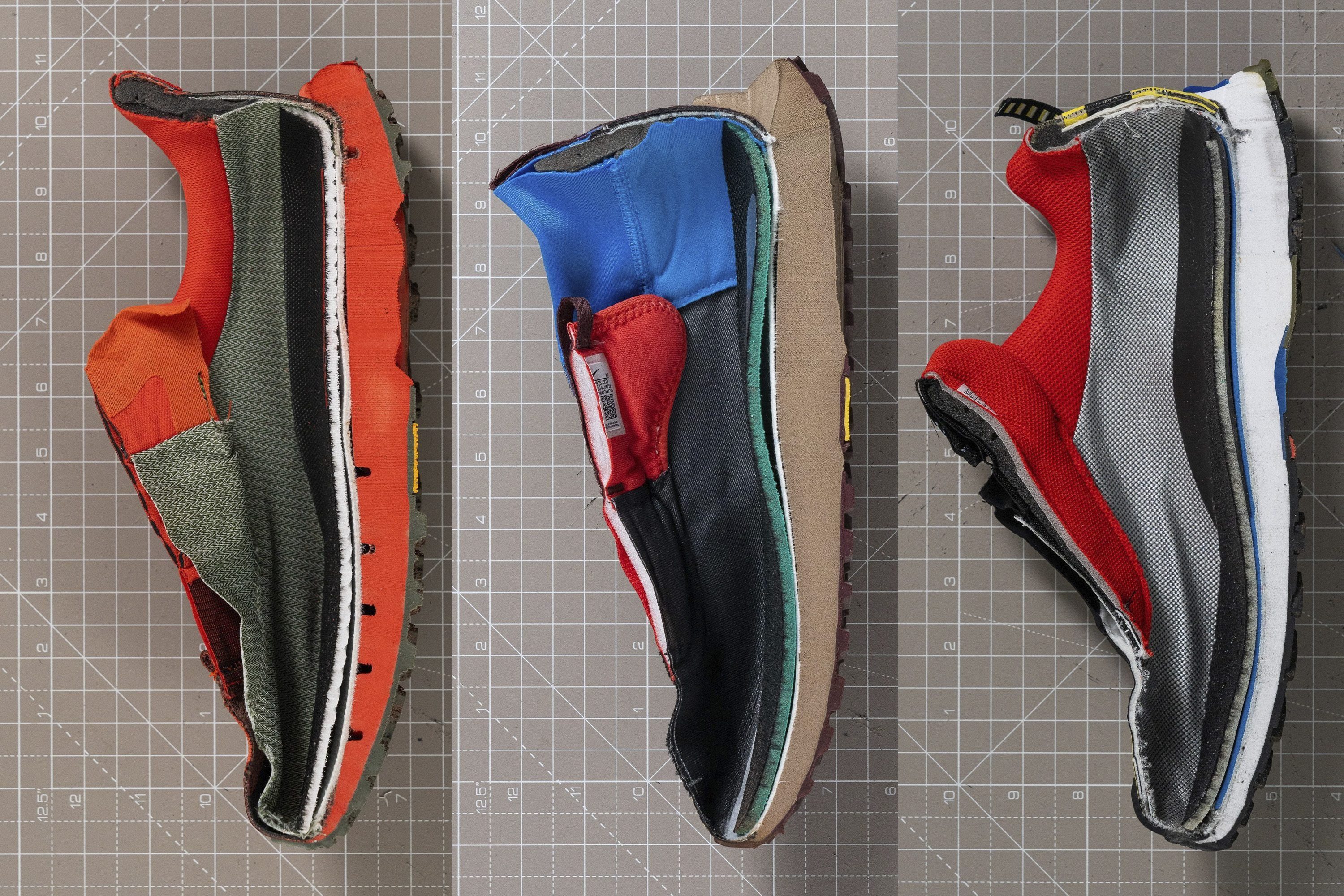
|
Extra tip: keep in mind that even waterproof running shoes can do only so much. If you plan to run through tall wet grass or in heavier rain, it’s best to also use waterproof gaiters. They will prevent the water from sliding down your legs or trousers and getting into the shoes. They also come in handy when you want to keep your socks clean and not all muddy or shoes filled with tiny pebbles. |
Wide running shoes for beginners
If, based on all the other footwear you own, you already know that you need more room in the toebox or wider shoes overall, you have 2 options:
- Finding running shoes that are available in Wide or Extra Wide
- Finding running shoes that have a wider toebox.
Let’s explain both.
Wide running shoes overall
Here’s how to recognise wide running shoes: if you’re a woman, look for shoes tagged with D or 2E signs, and if you’re a man, look for 2E or 4E.
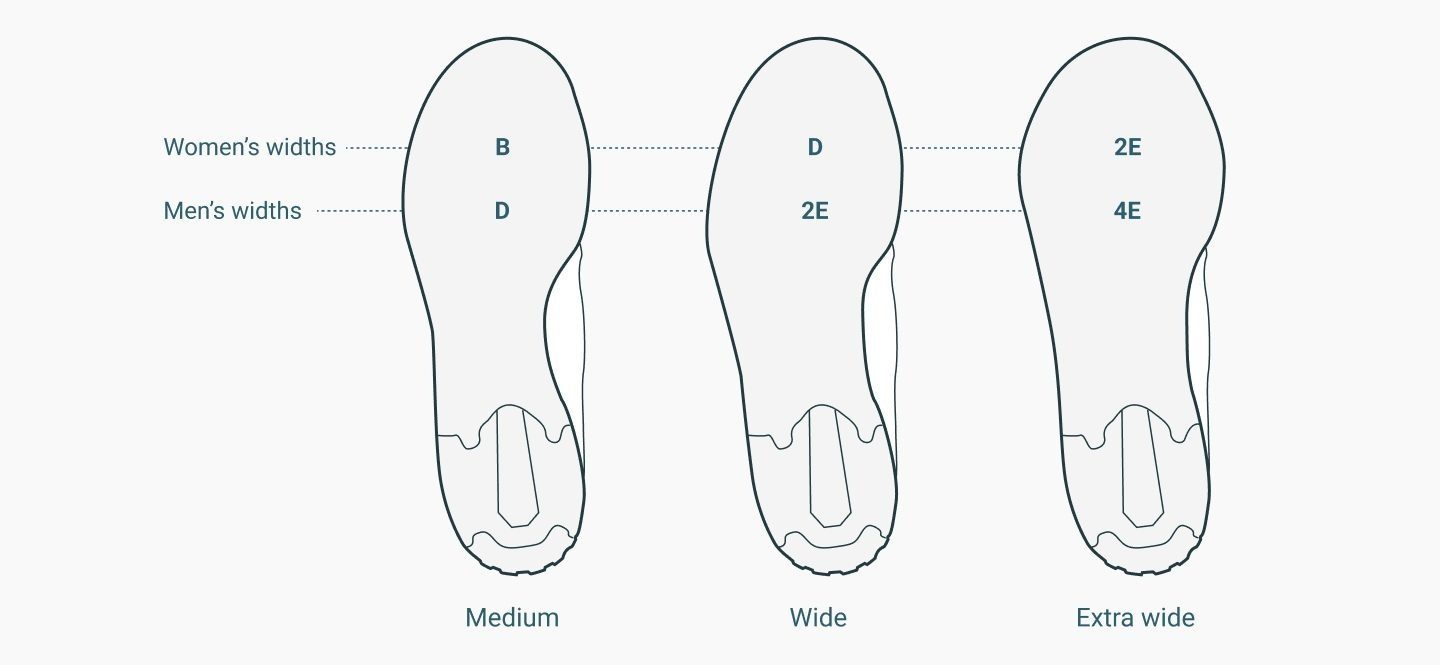
You will find these industry labels everywhere, online, next to the shoe name, or on the shoe box.
| Narrow | Medium/Standard | Wide | Extra wide | |
| Men | B | D | 2E | 4E |
| Women | 2A | B | D | 2E |
Industry labels for different widths of running shoes
Not all running shoes are available in Wide and Extra Wide, so you might be disappointed.
Wide toebox in beginner’s running shoes
The volume of the shoe and its toebox have long puzzled us and other runners. After a few iterations, we’ve perfected this test using a gel that fills the shoe so we can accurately measure the width of the shoe, and the toebox width and height.
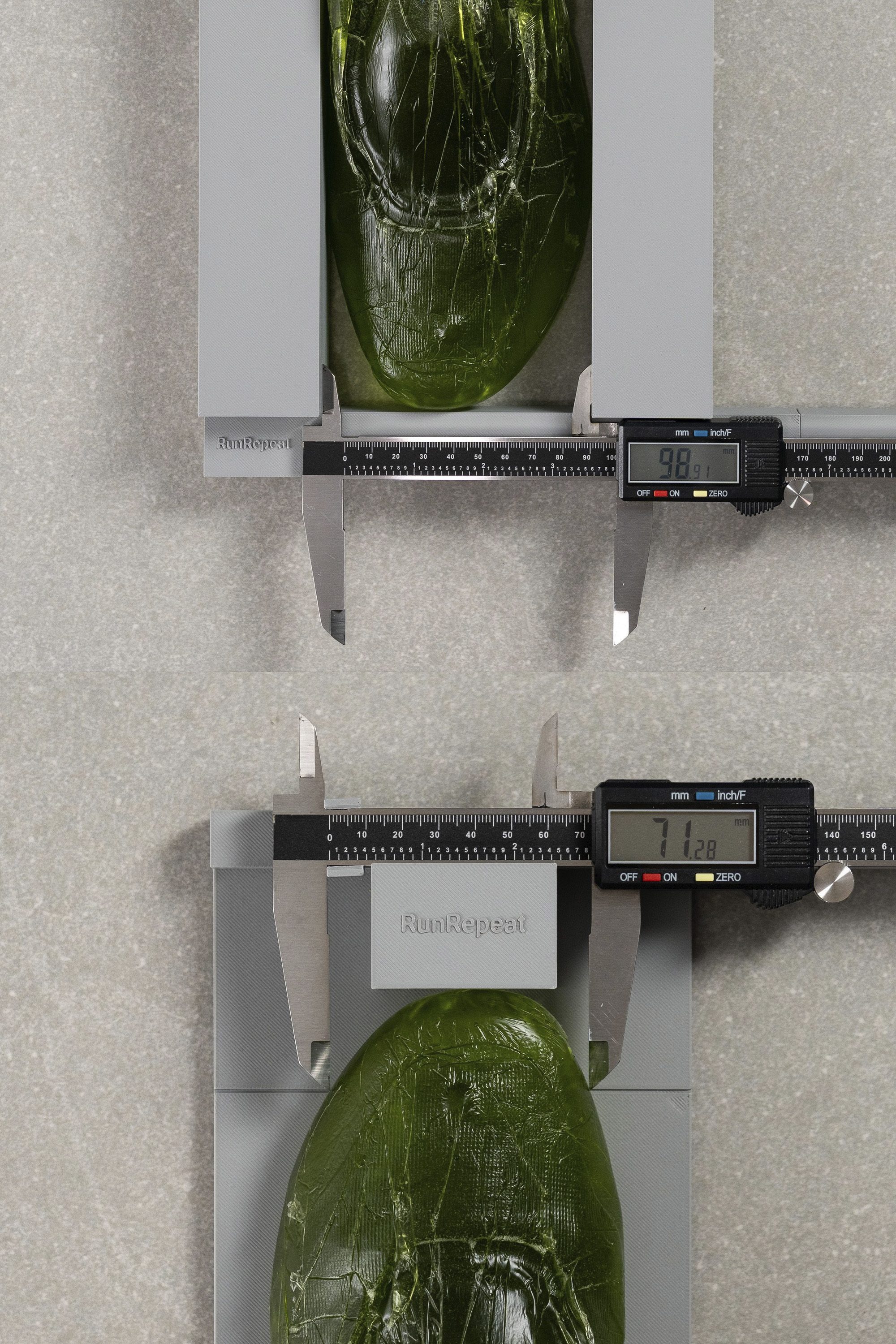
Why we make 2 measurements? Because people have feet and toes of wildly different shapes!
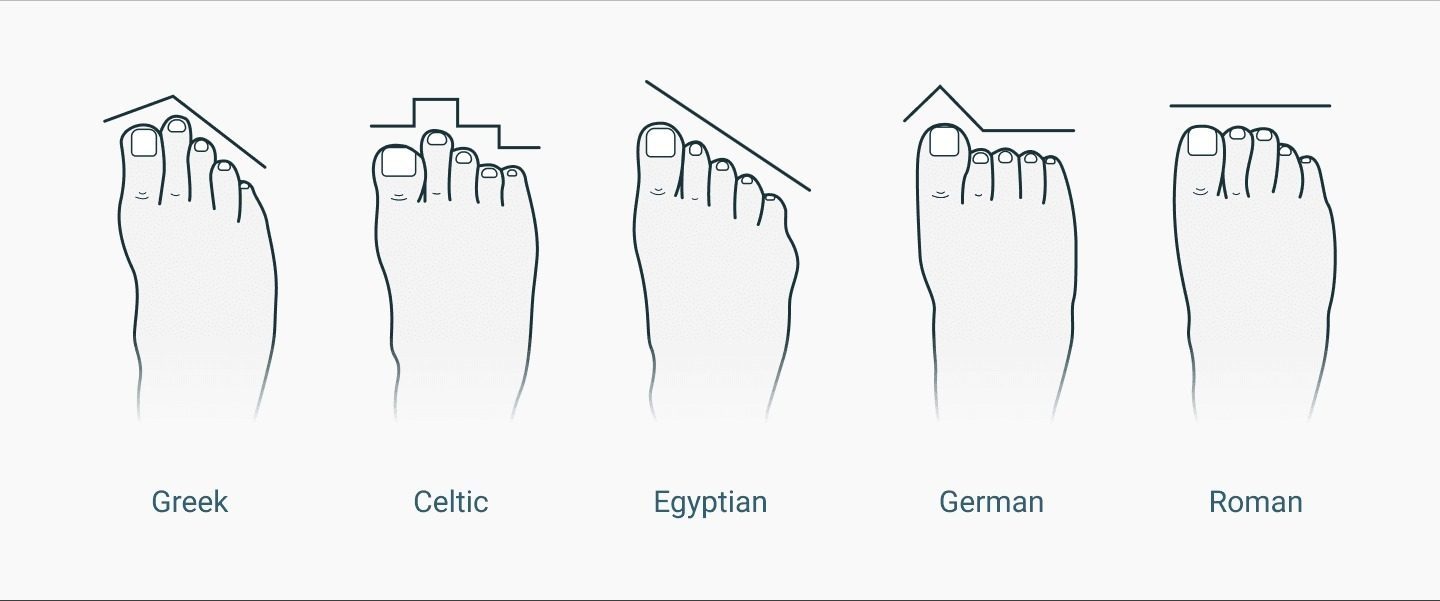
Some runners need a pointy toebox (like those with a Greek or Egyptian shape), while others need a more square-ish toebox. This is where our measurements enter the scene, knowing how wide the shoe is where it’s the widest and at the big toe tells us how pointy (tapered) the toebox is.
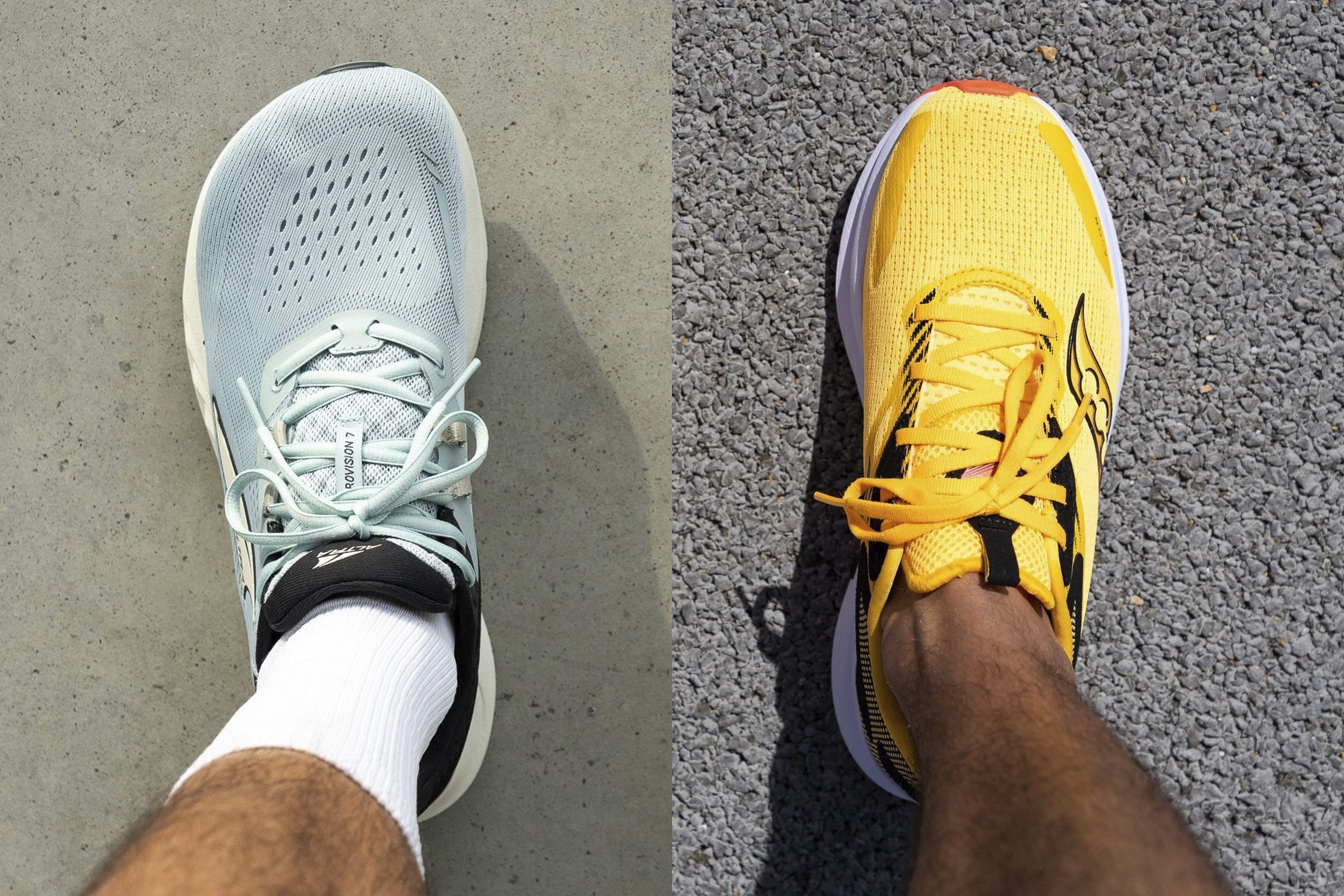
If your big toe is pointing up, look for a high toebox
Some of us have big toes pointing up, so we can’t run in shoes that have tight toeboxes that put pressure on our toes from the top. Doing so often results in pain, blisters, bleeding, black toenails, loosing toenails, etc.
If you’re one of those people, look for running shoes with more vertical space. Fortunately, it’s usually the race shoes that have a design aggressive enough to make the toeboxes lower but, still, it’s good to check to be on the safe side.
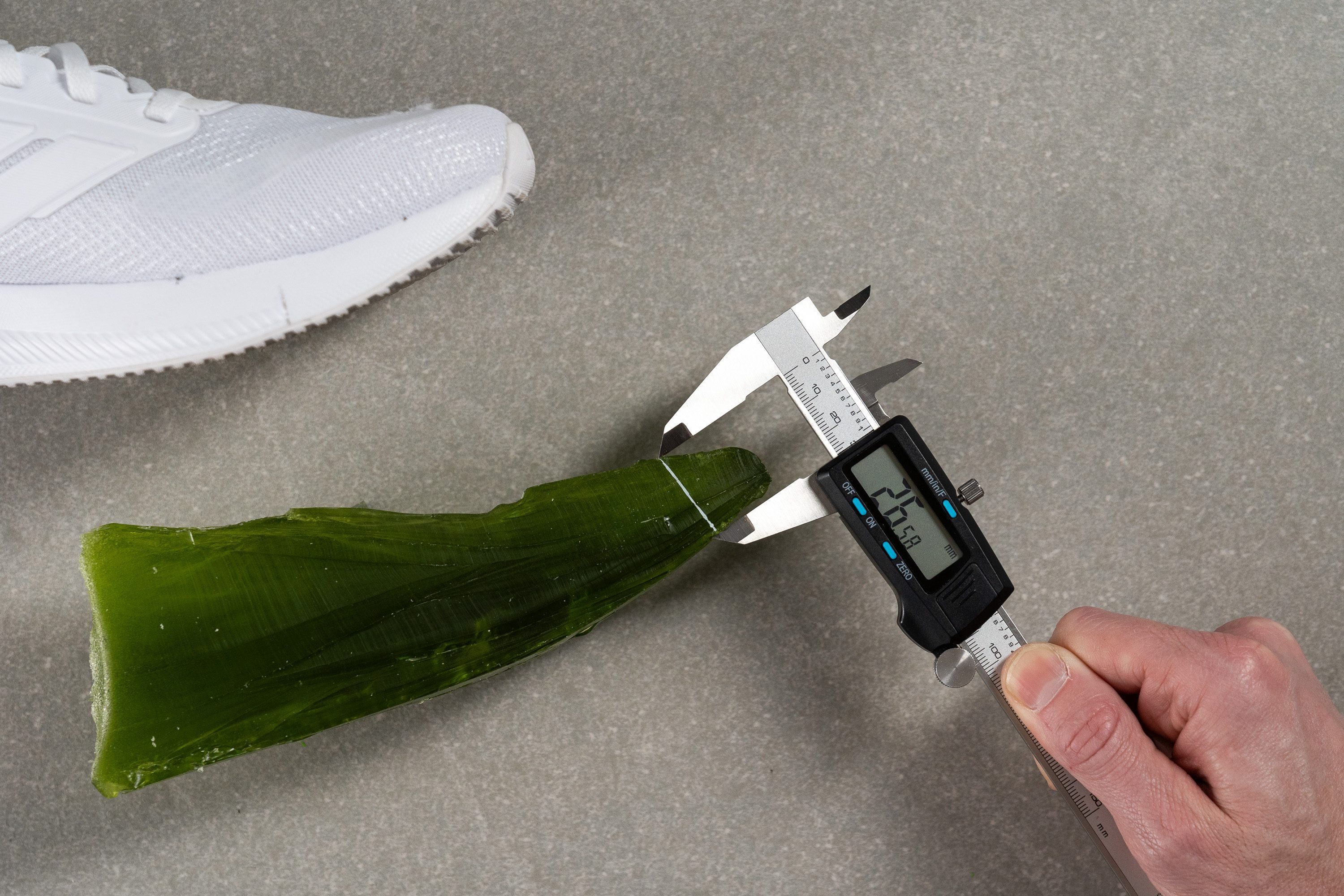
We also measure this in our lab, so you can always consult our data before making a decision.

